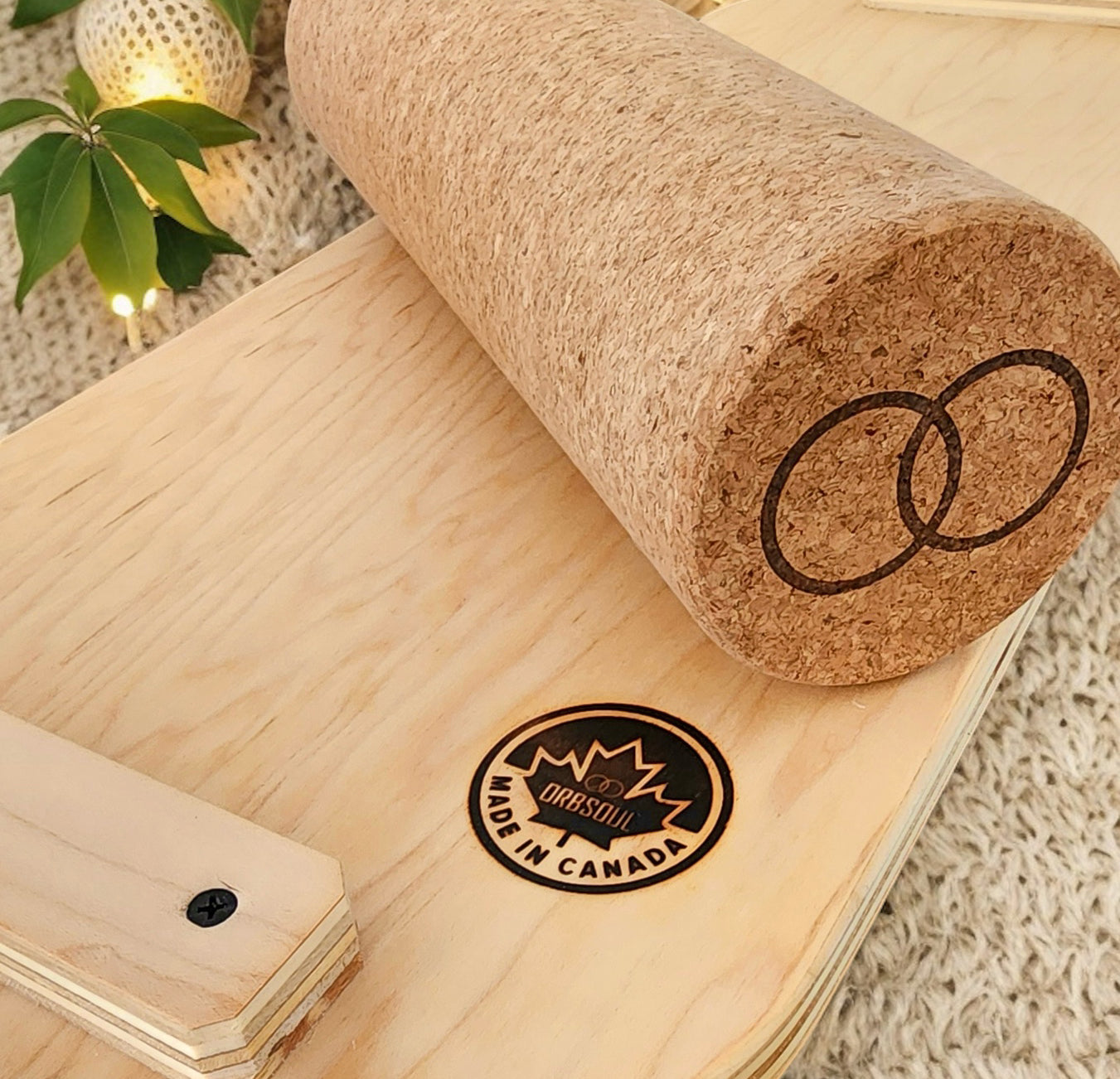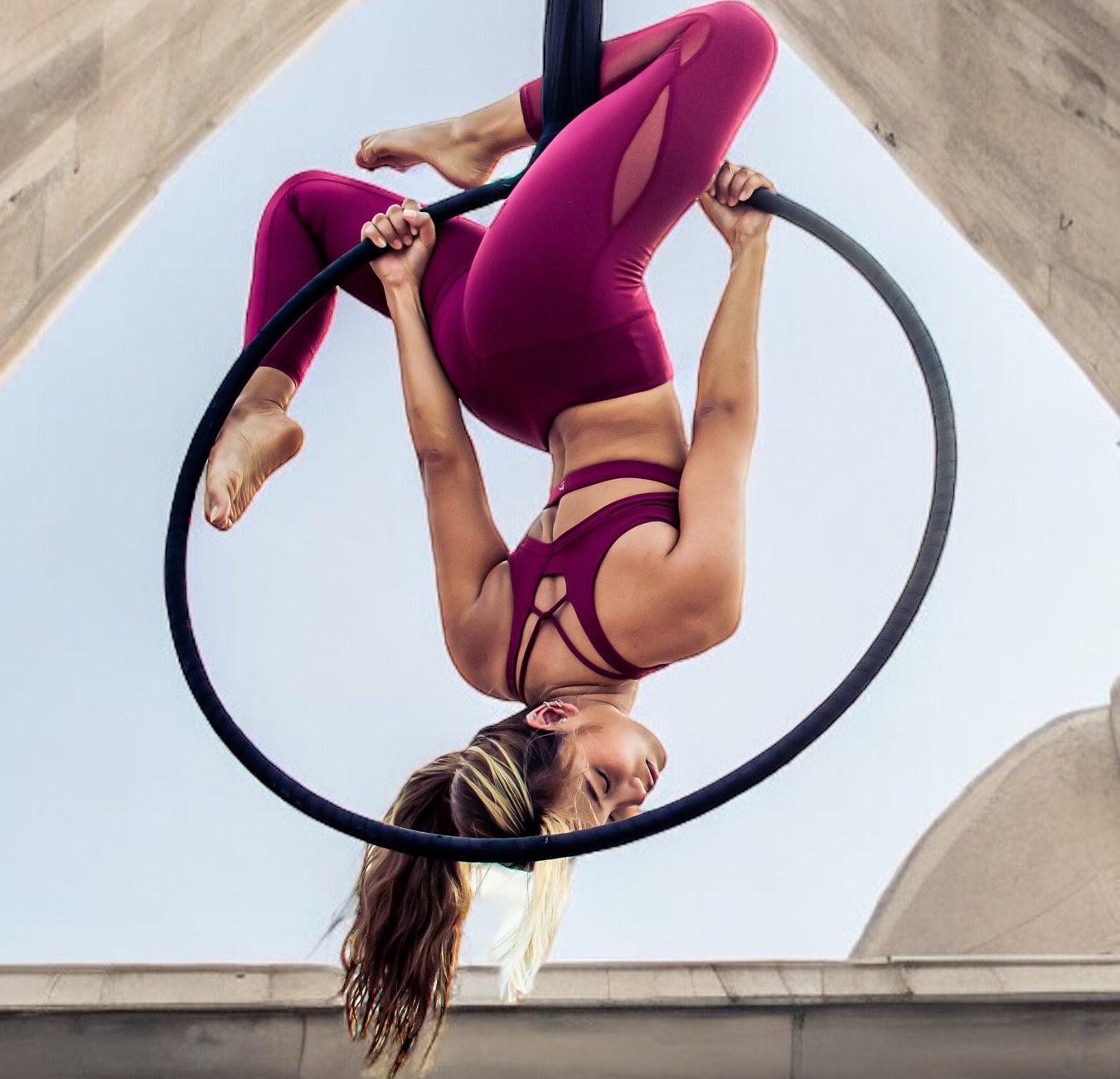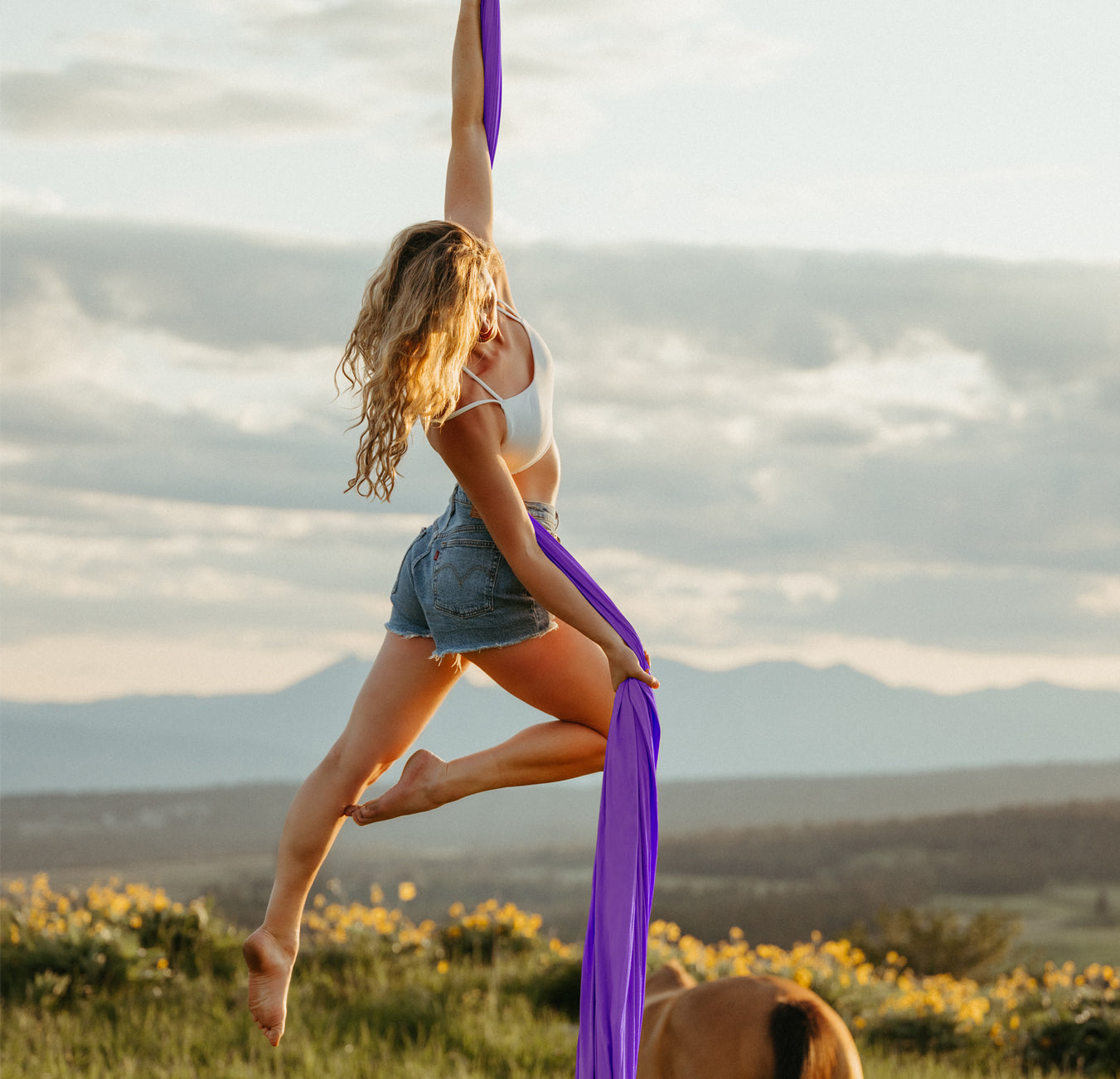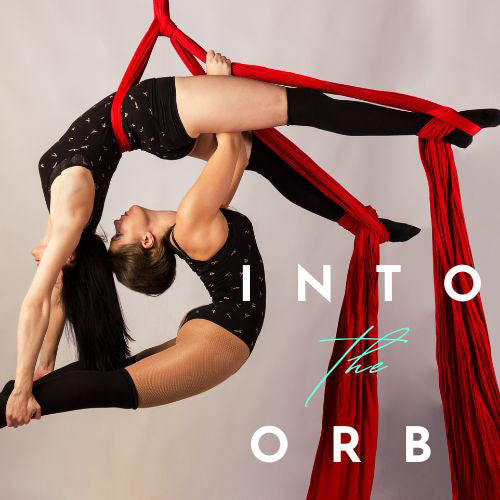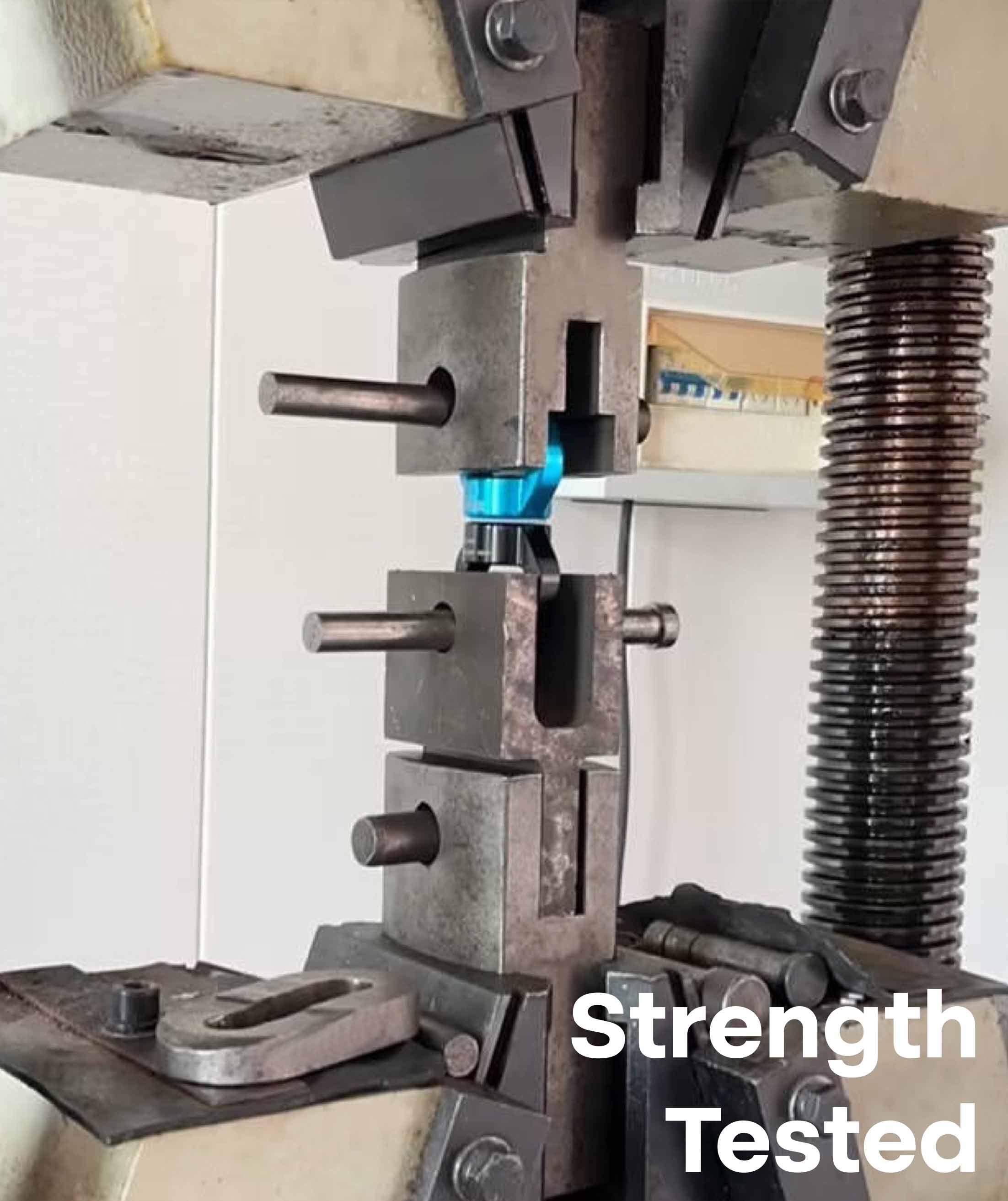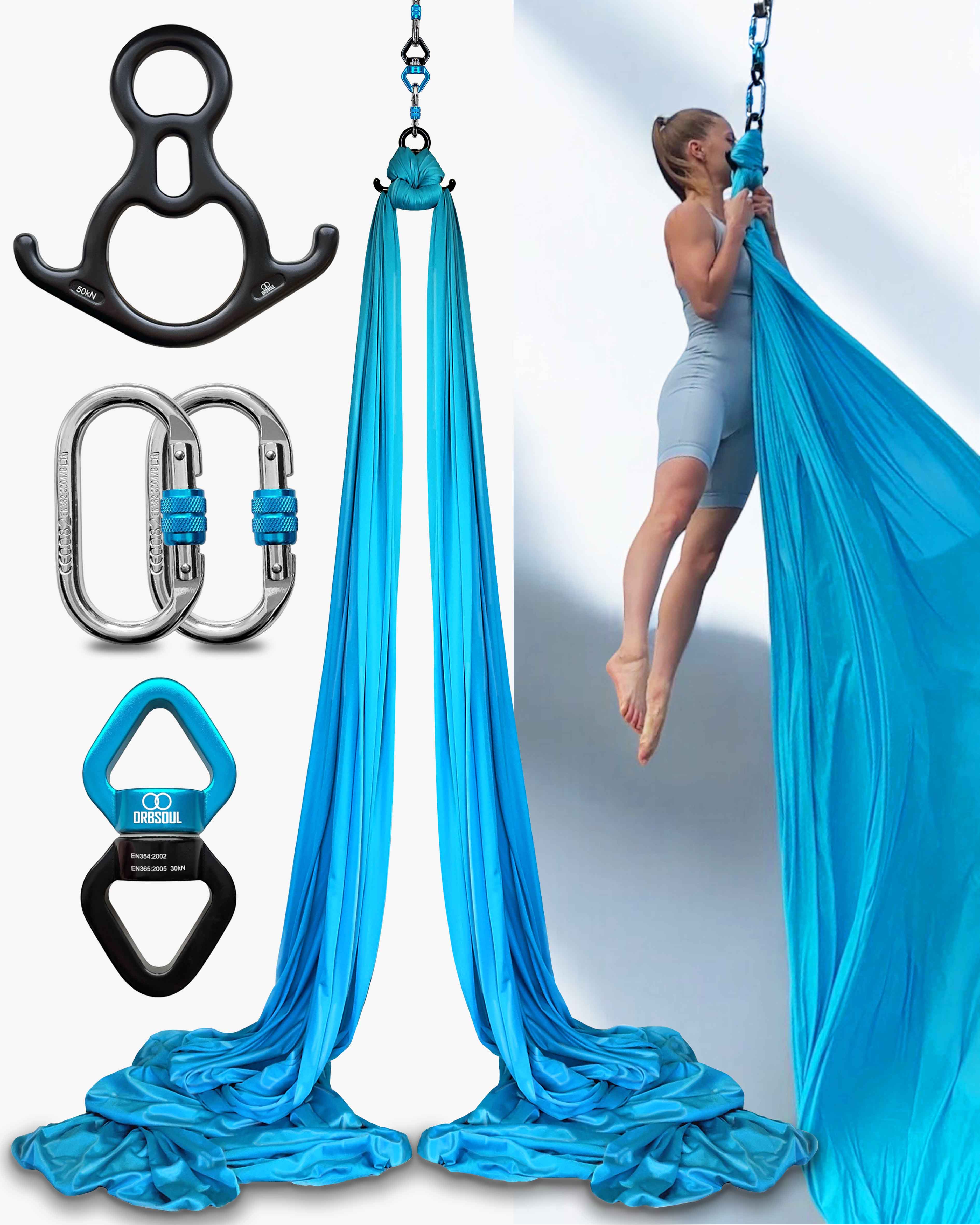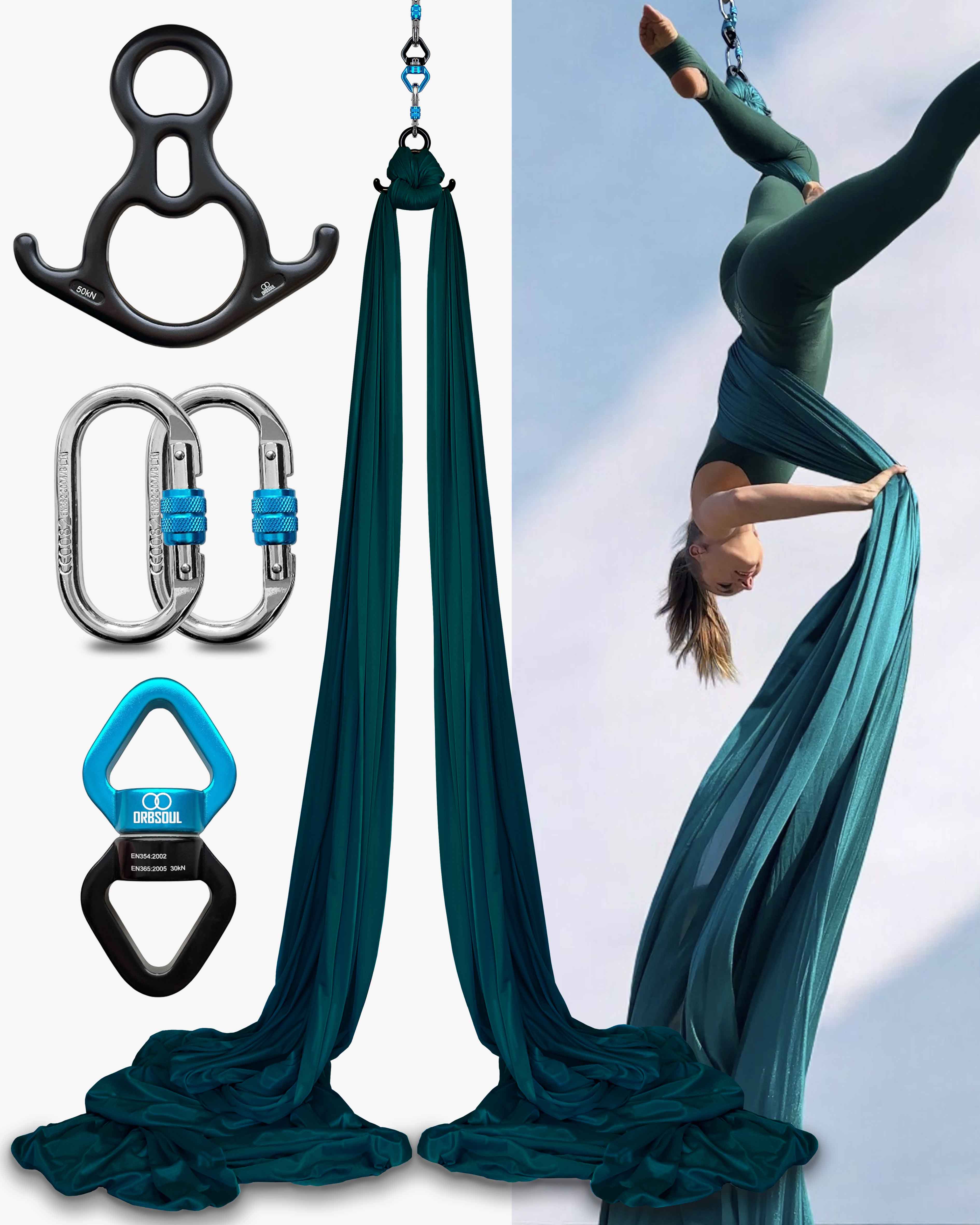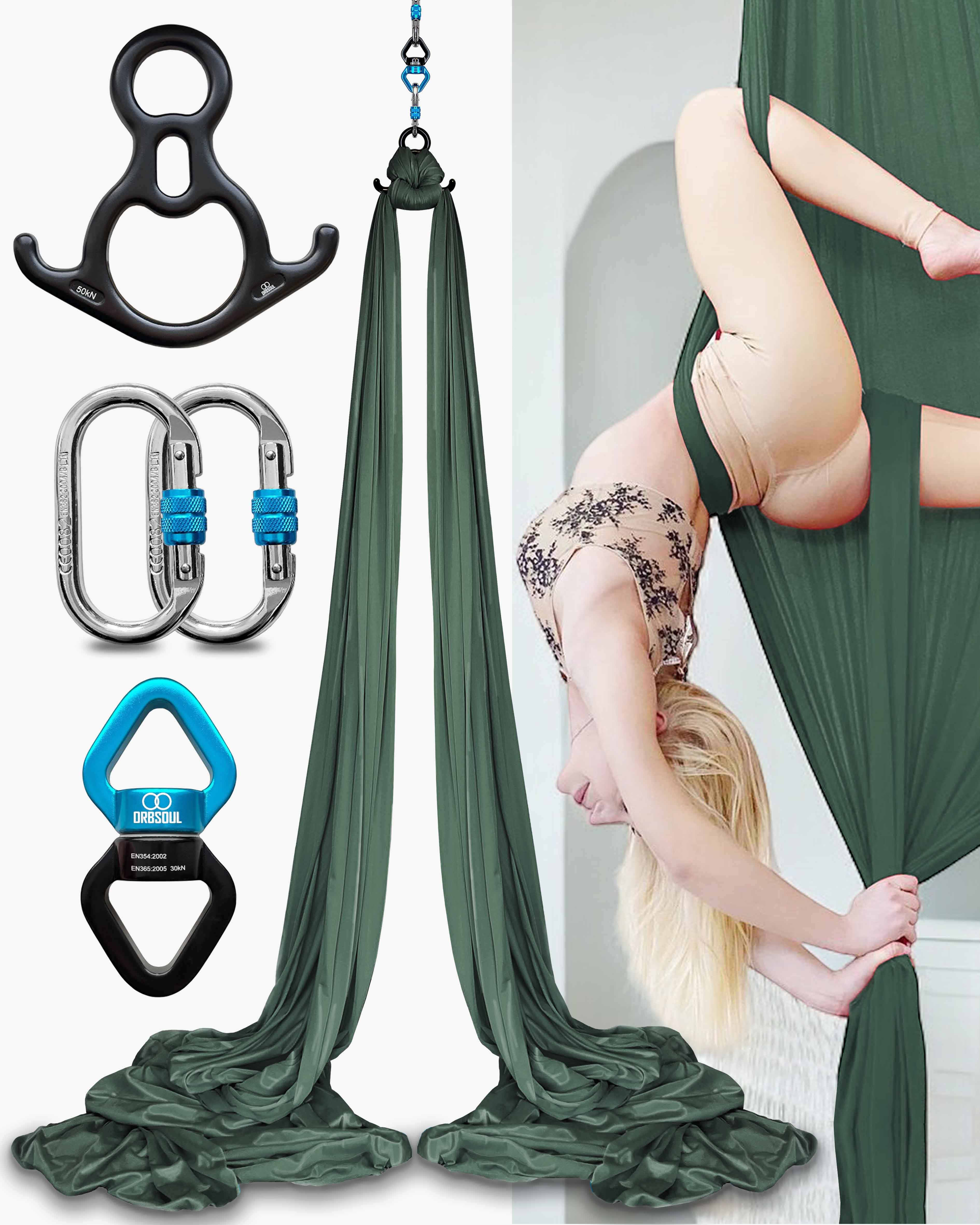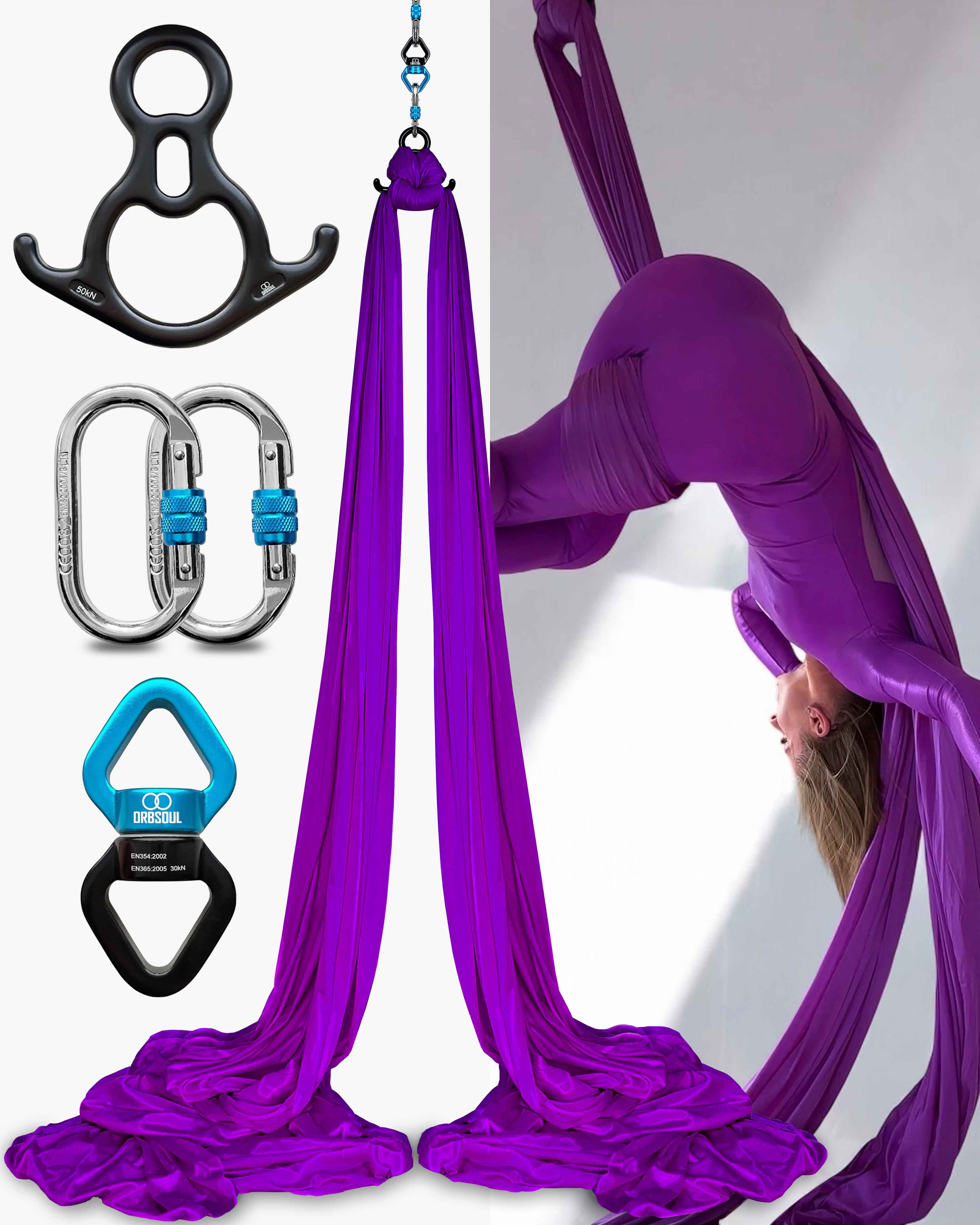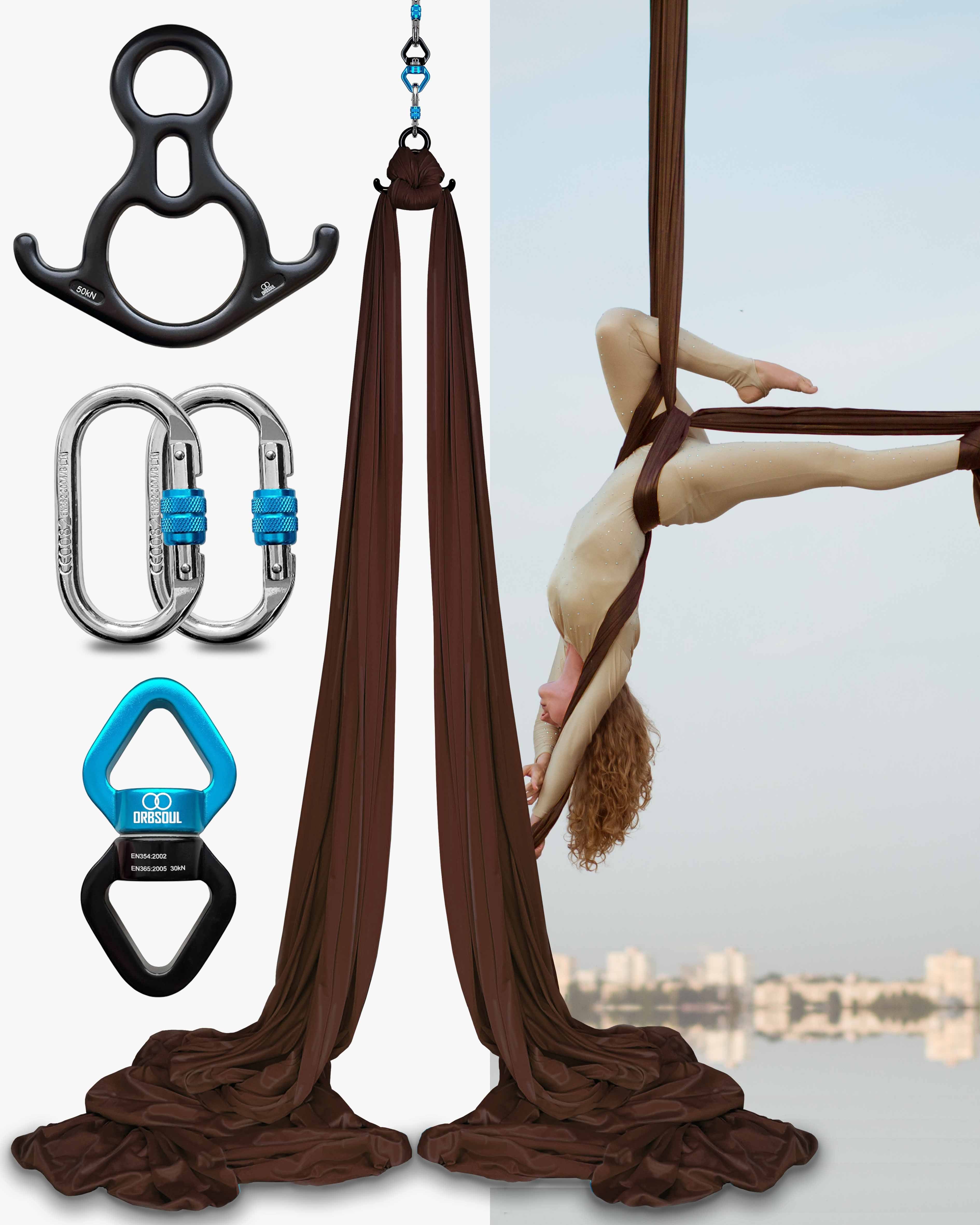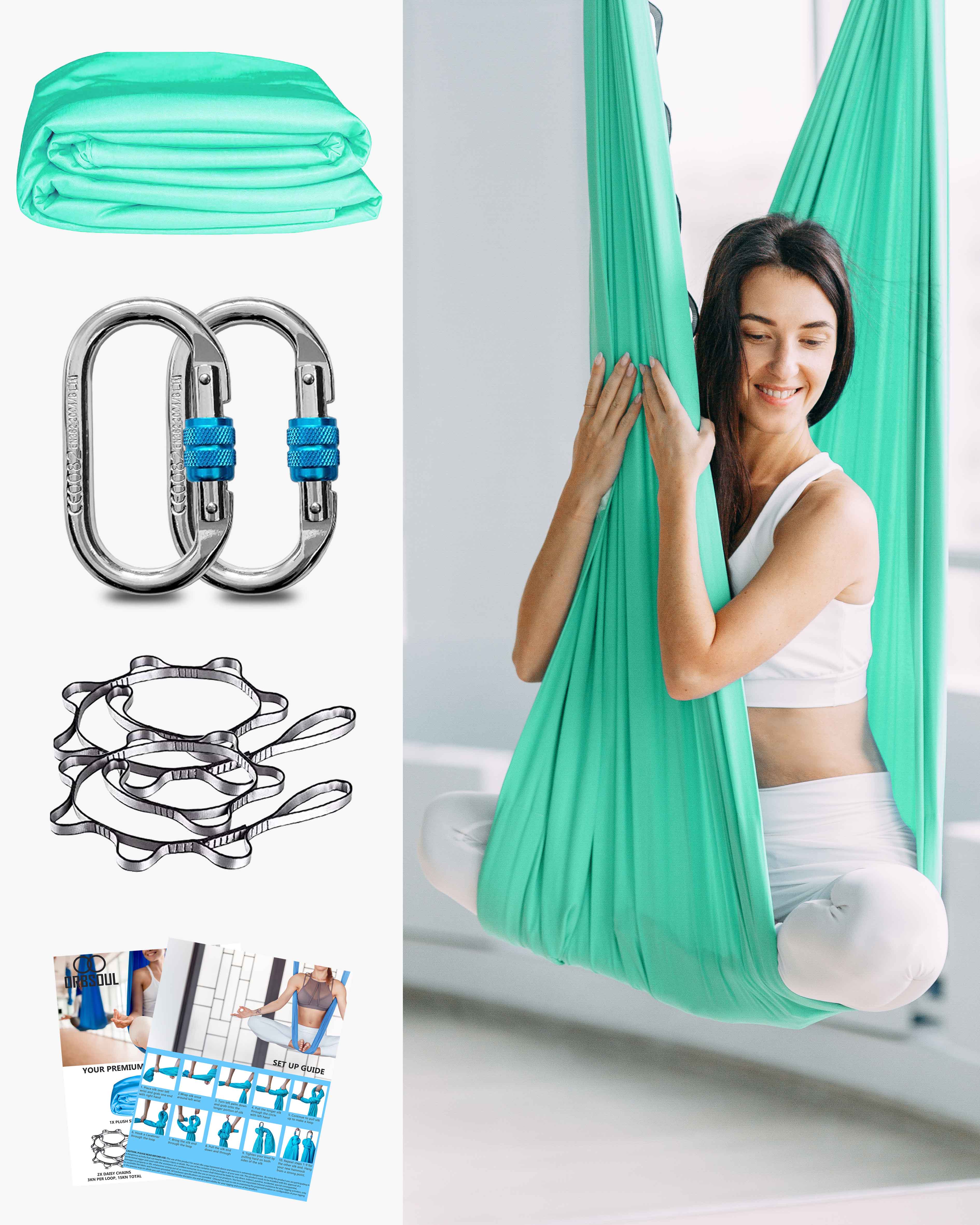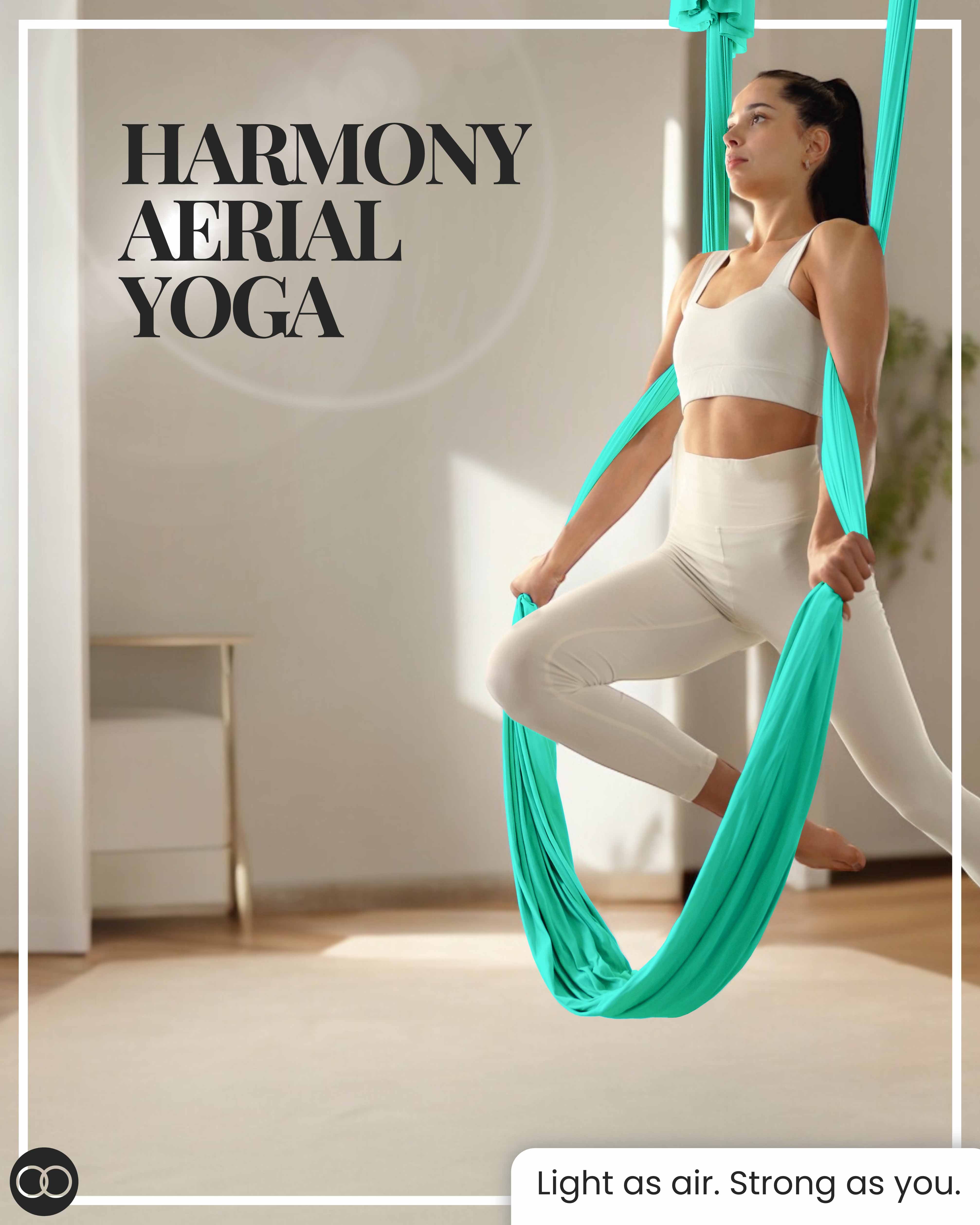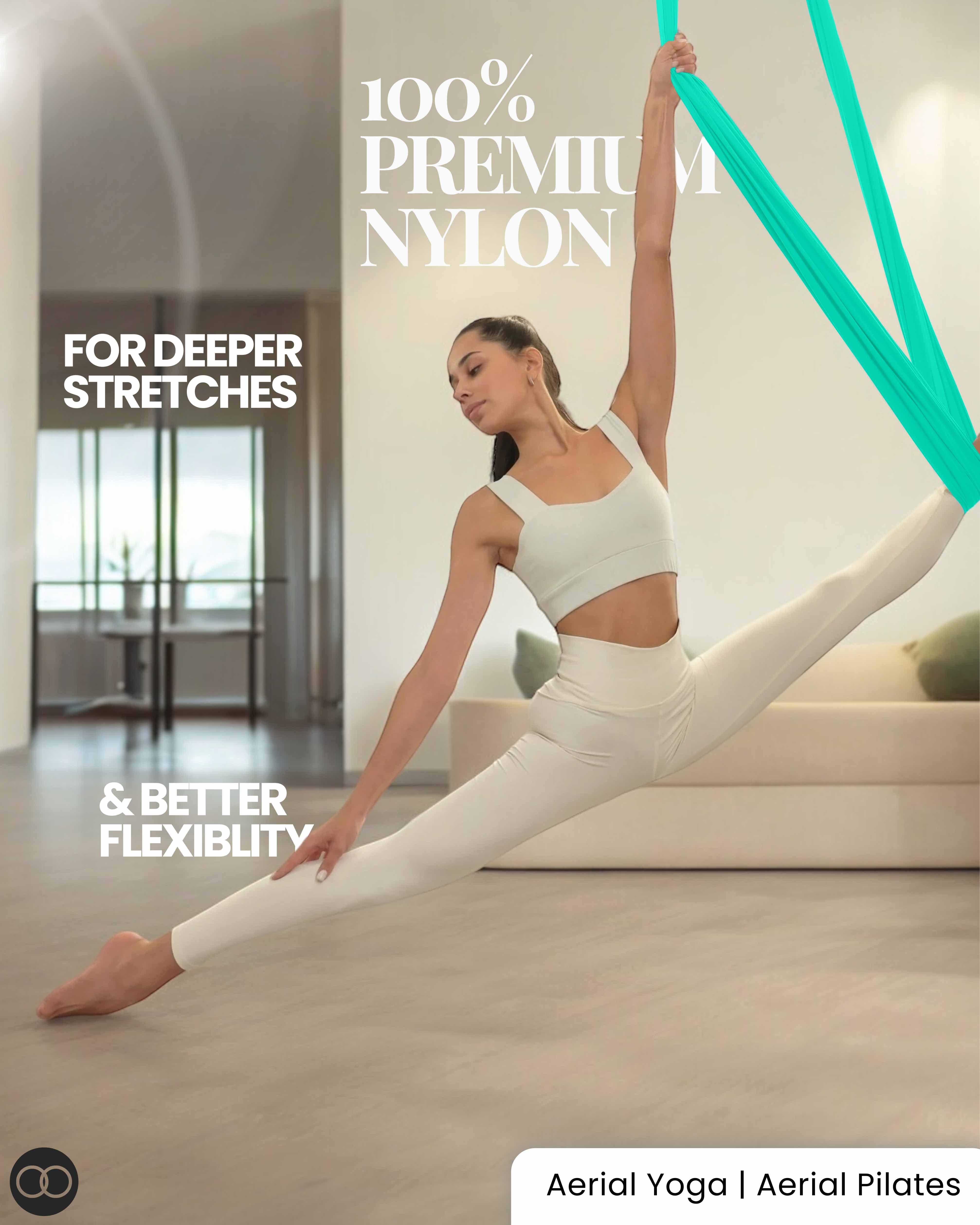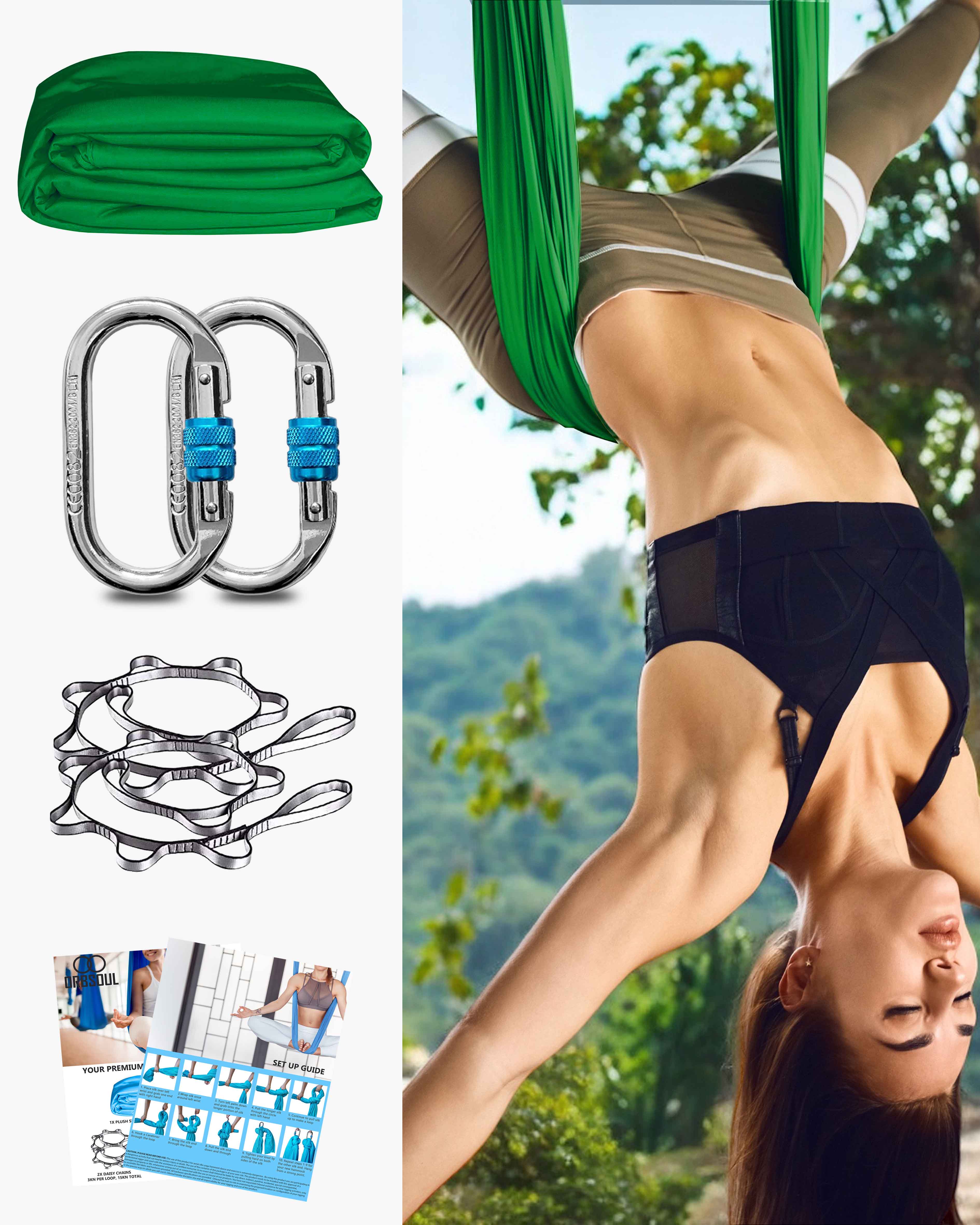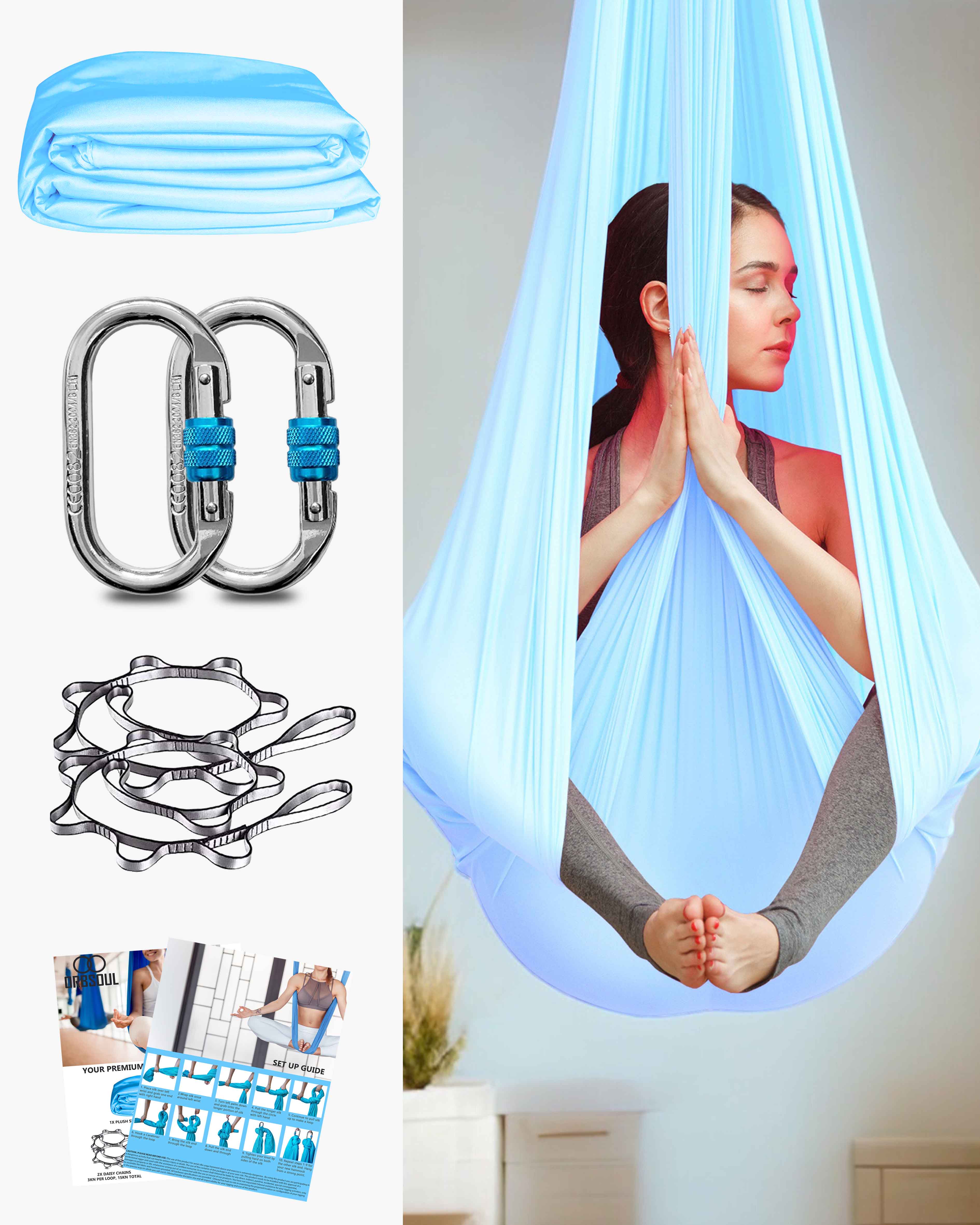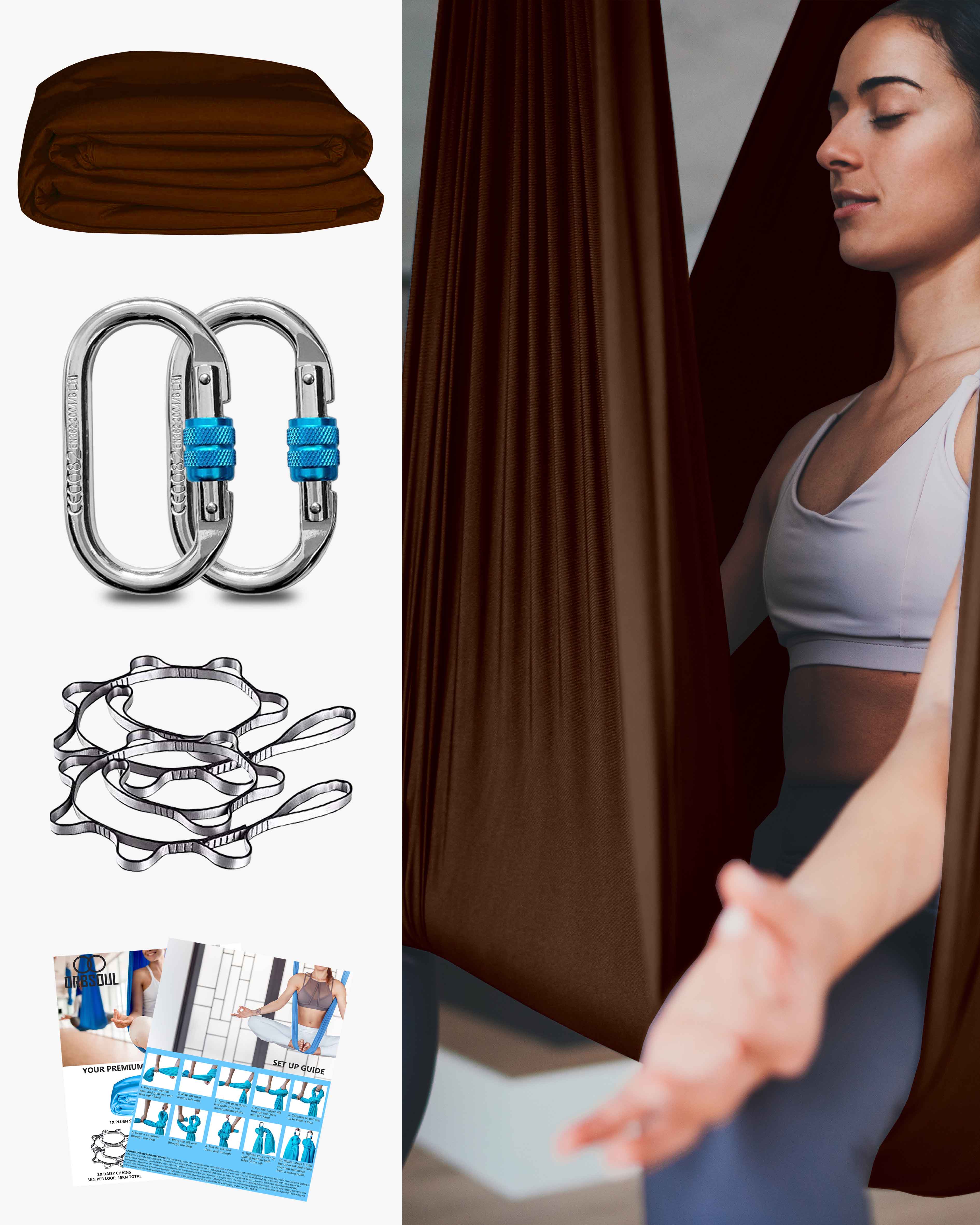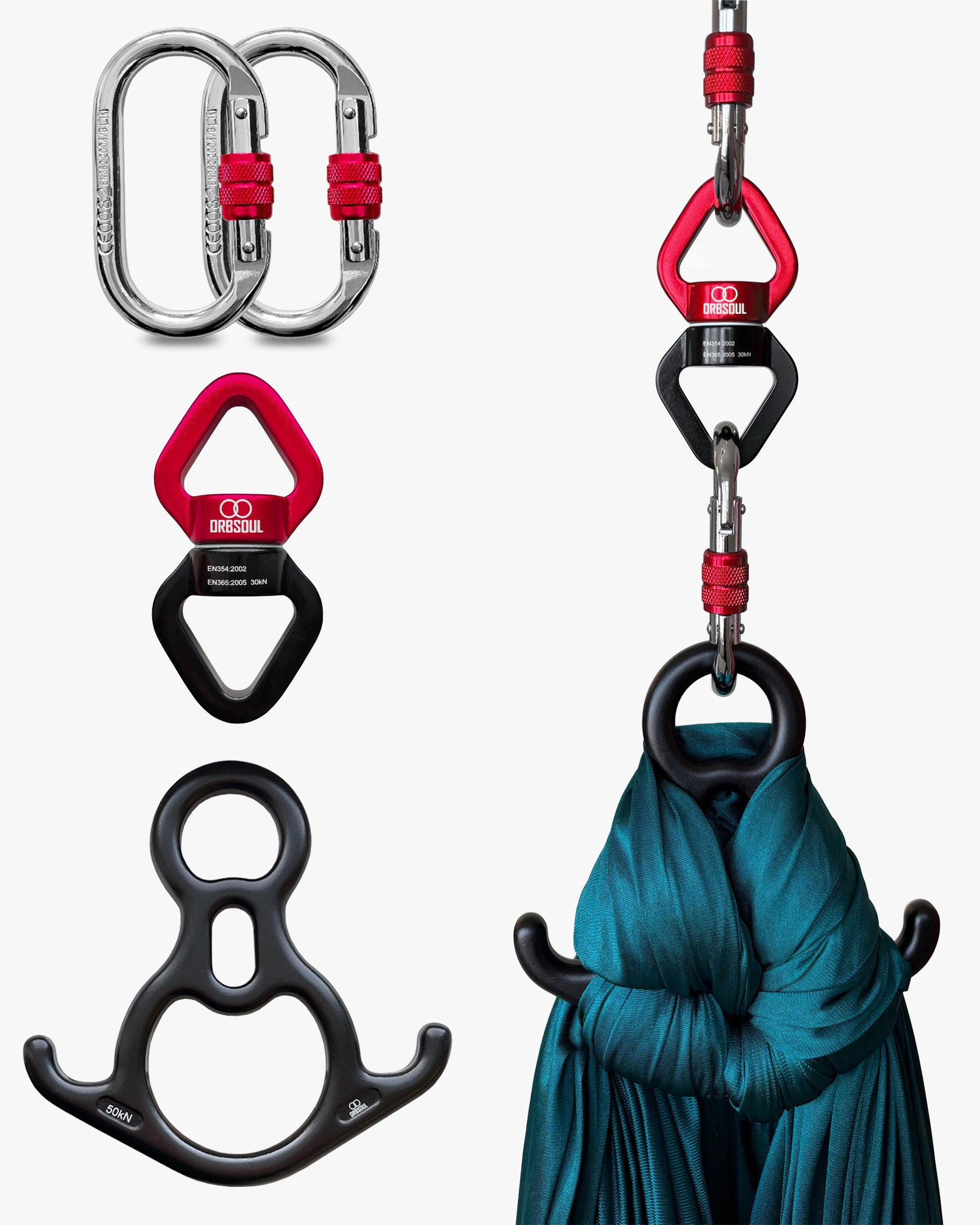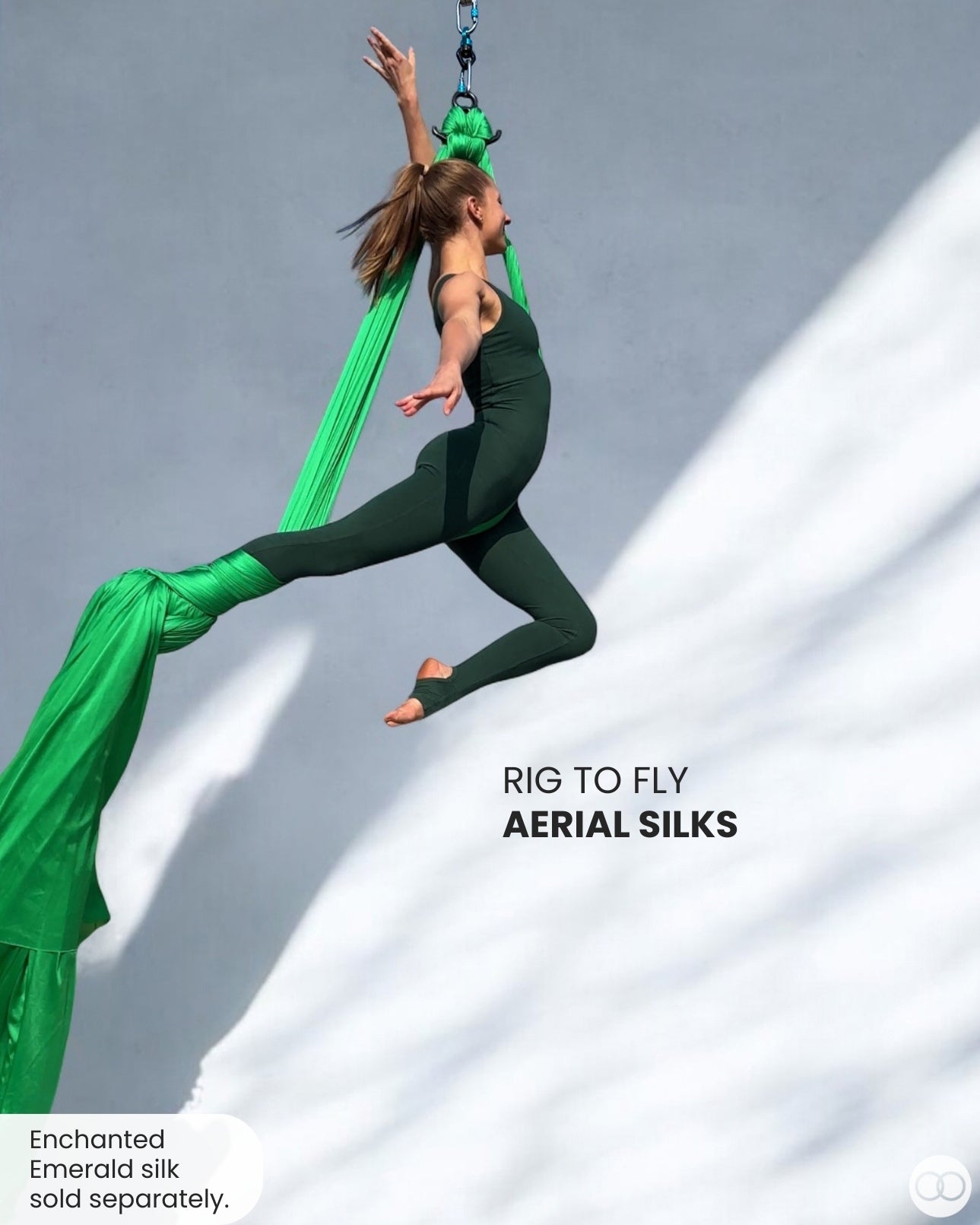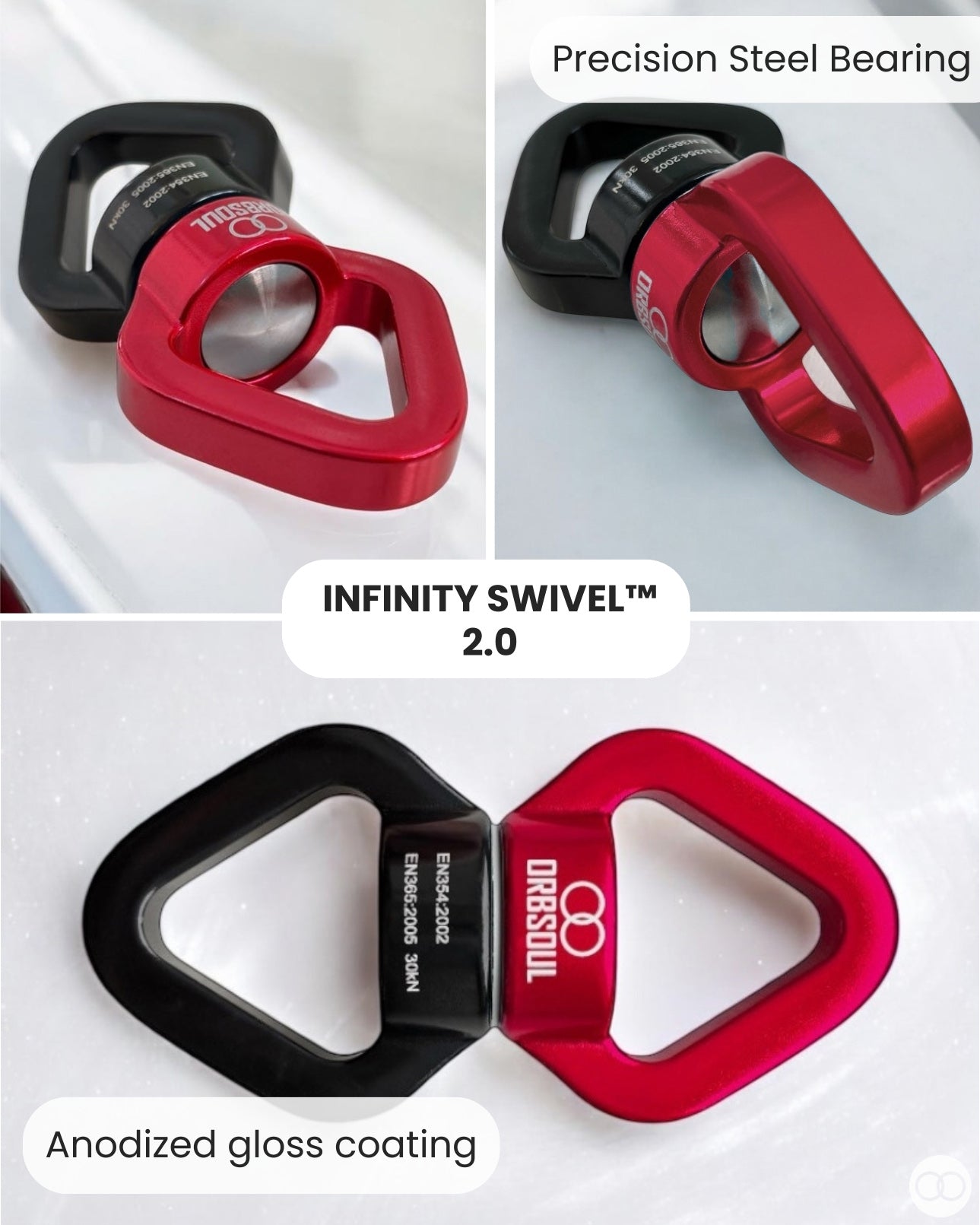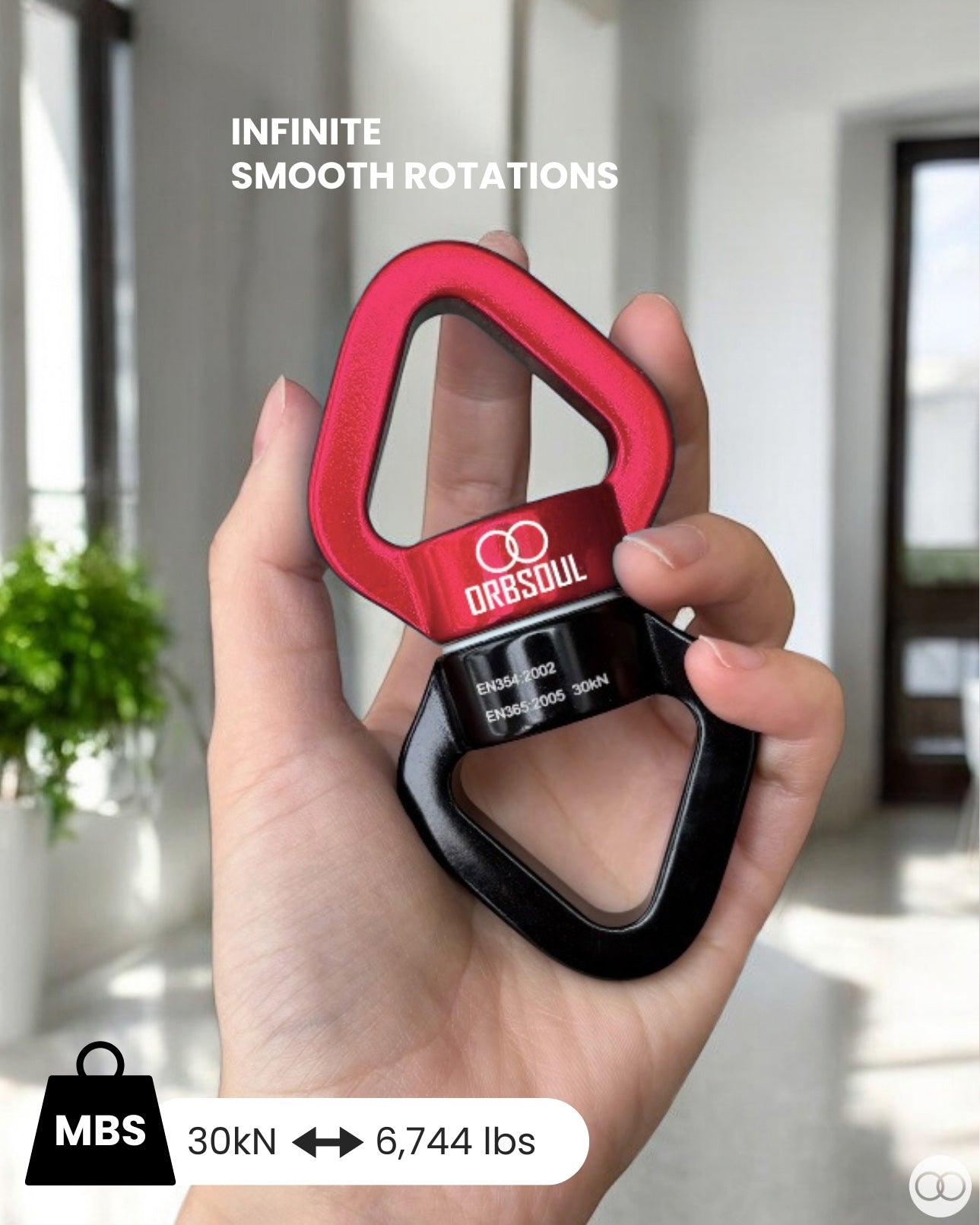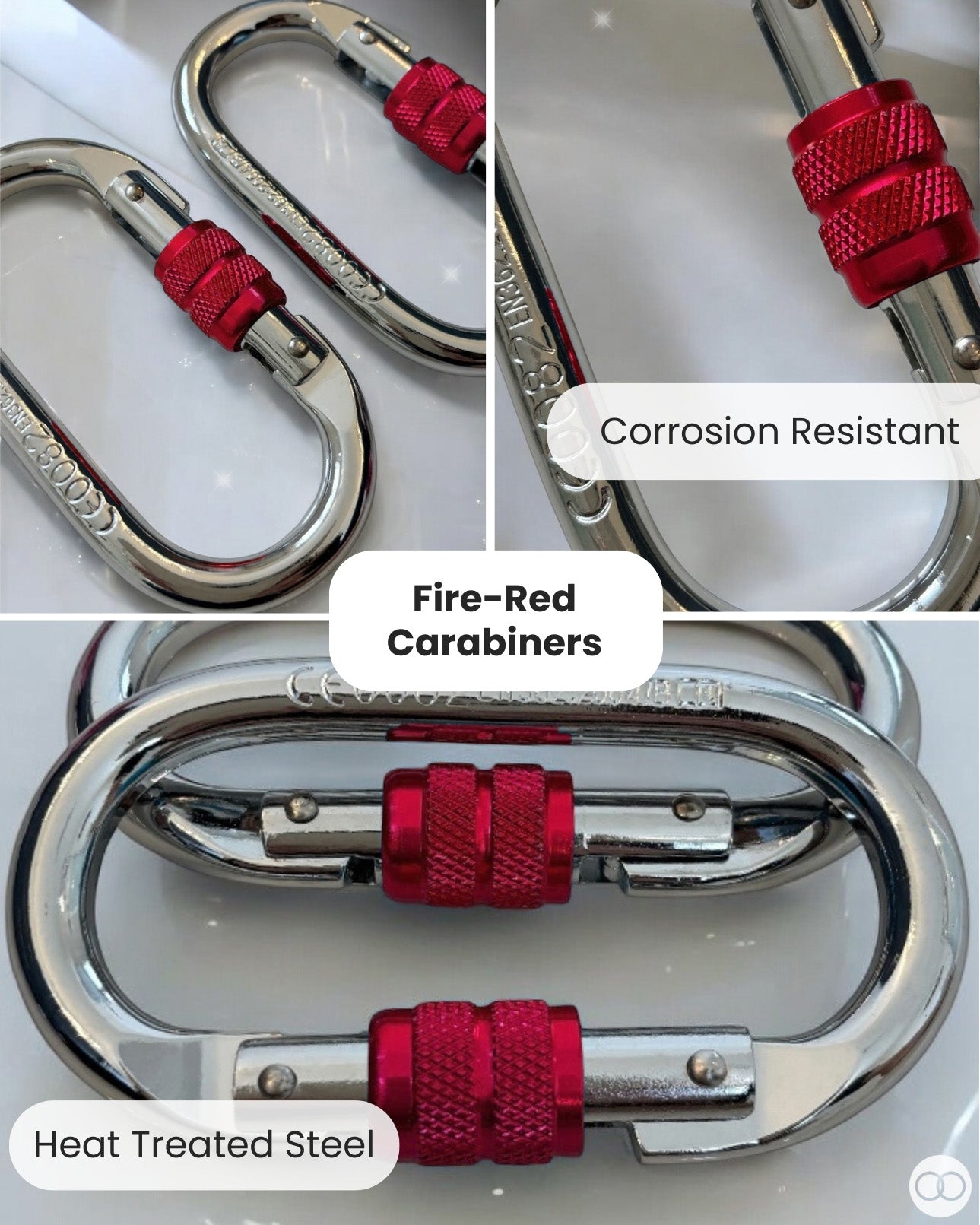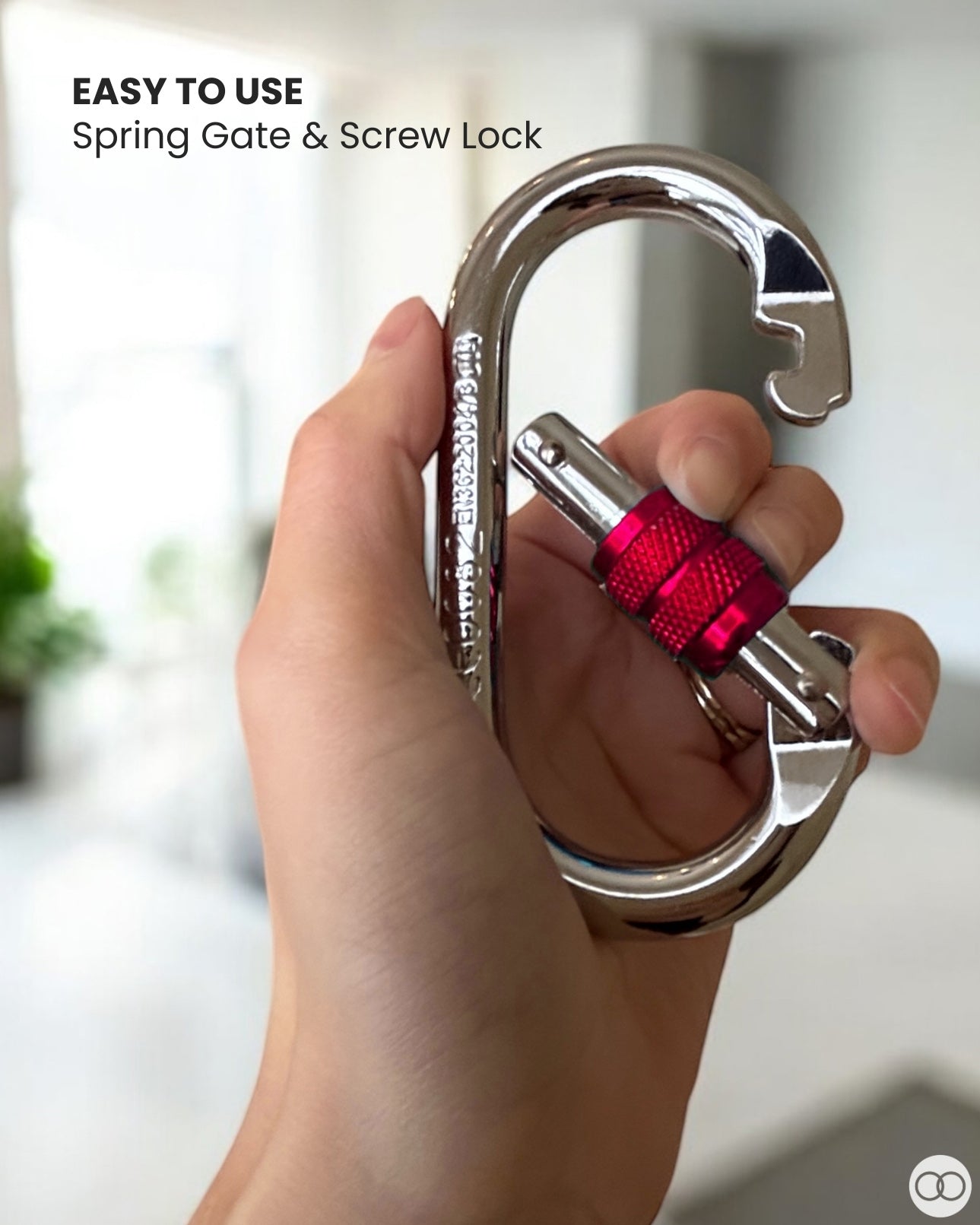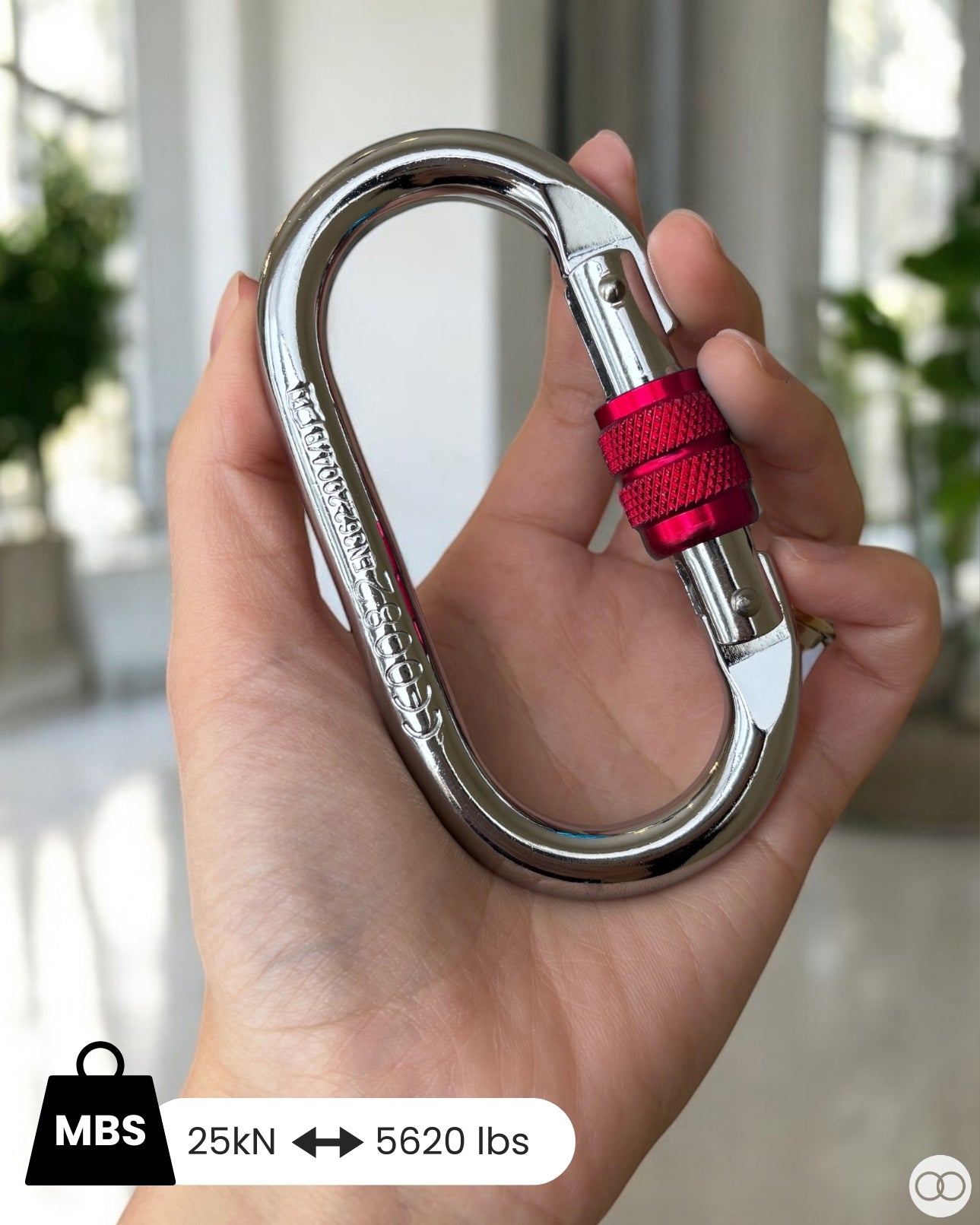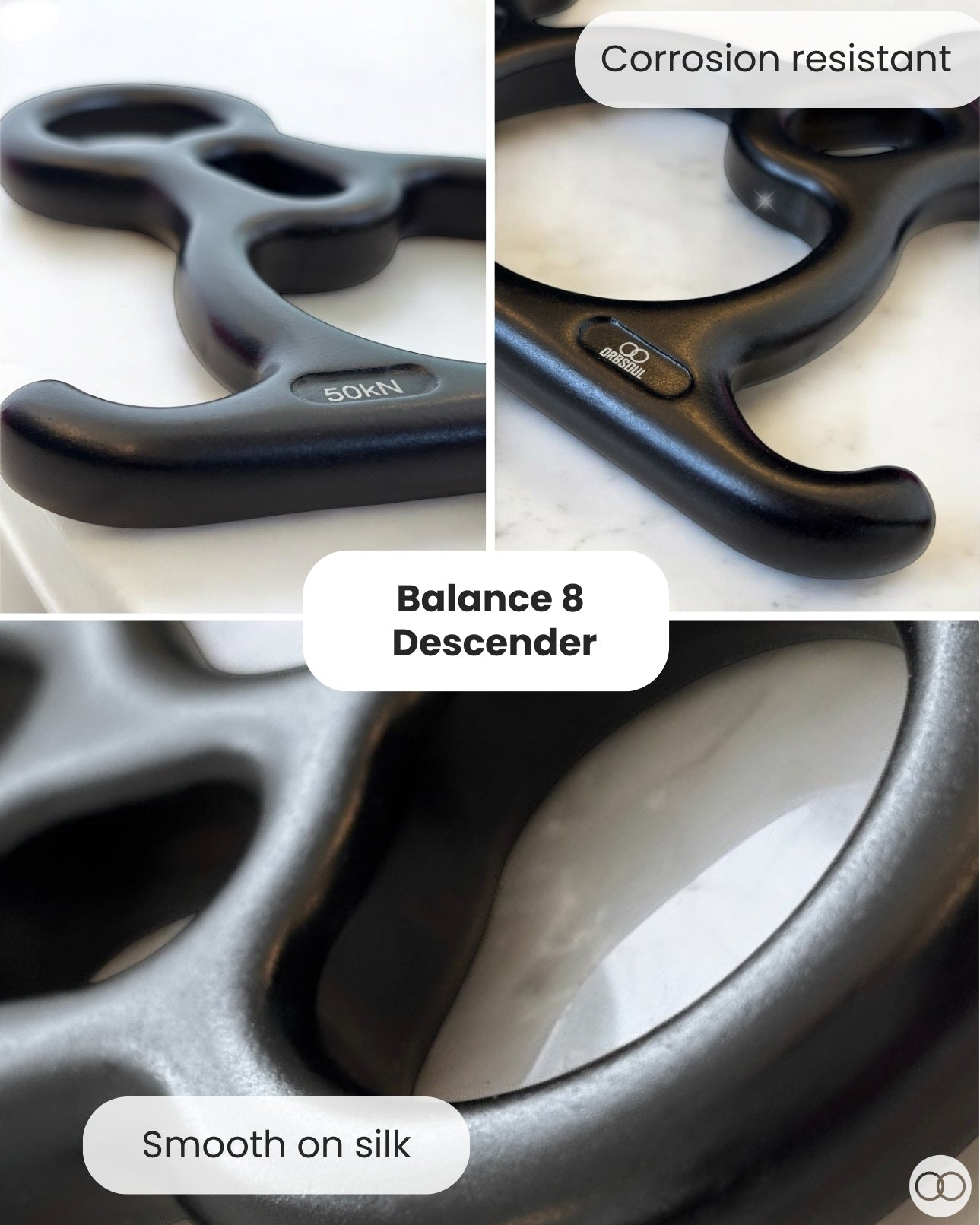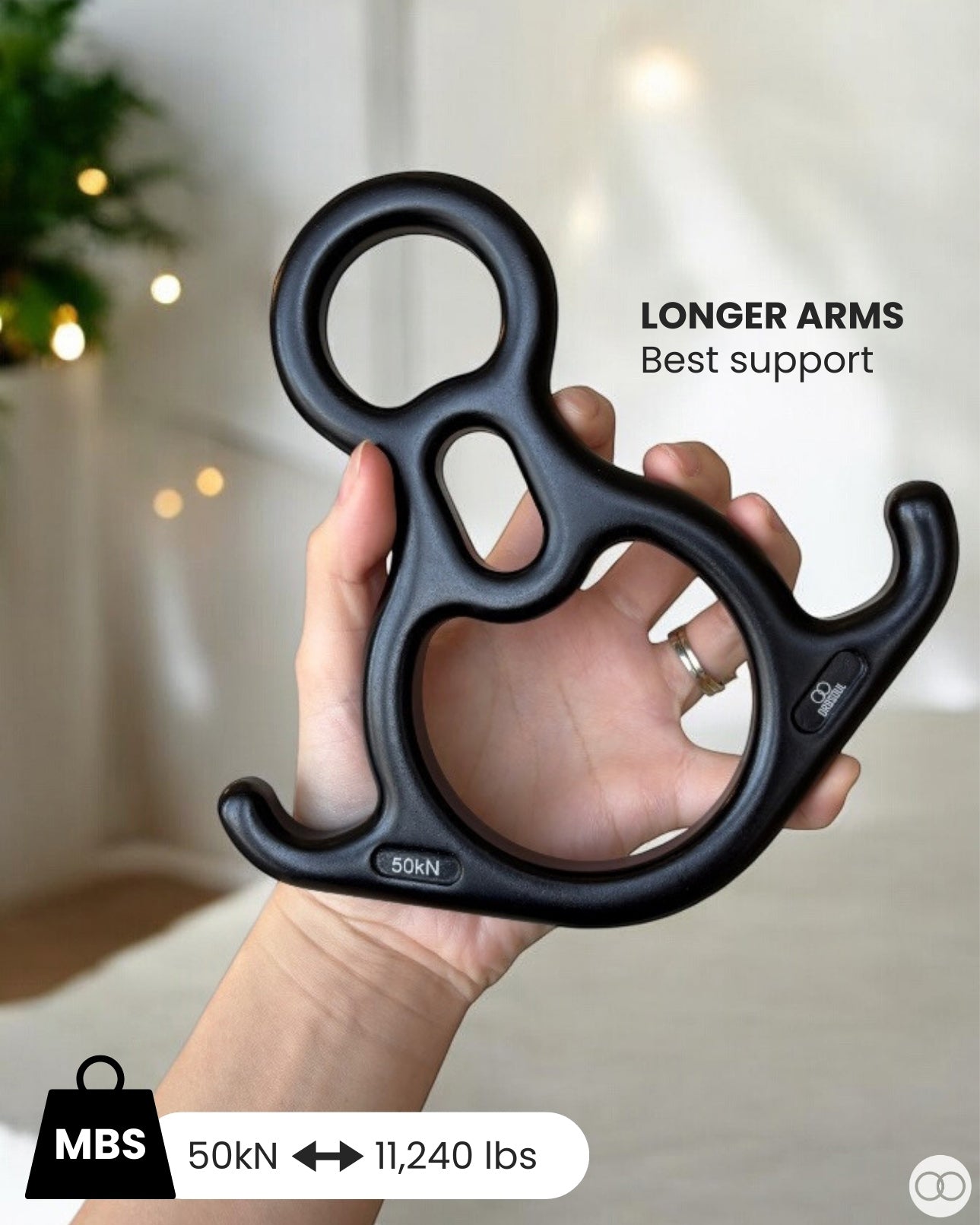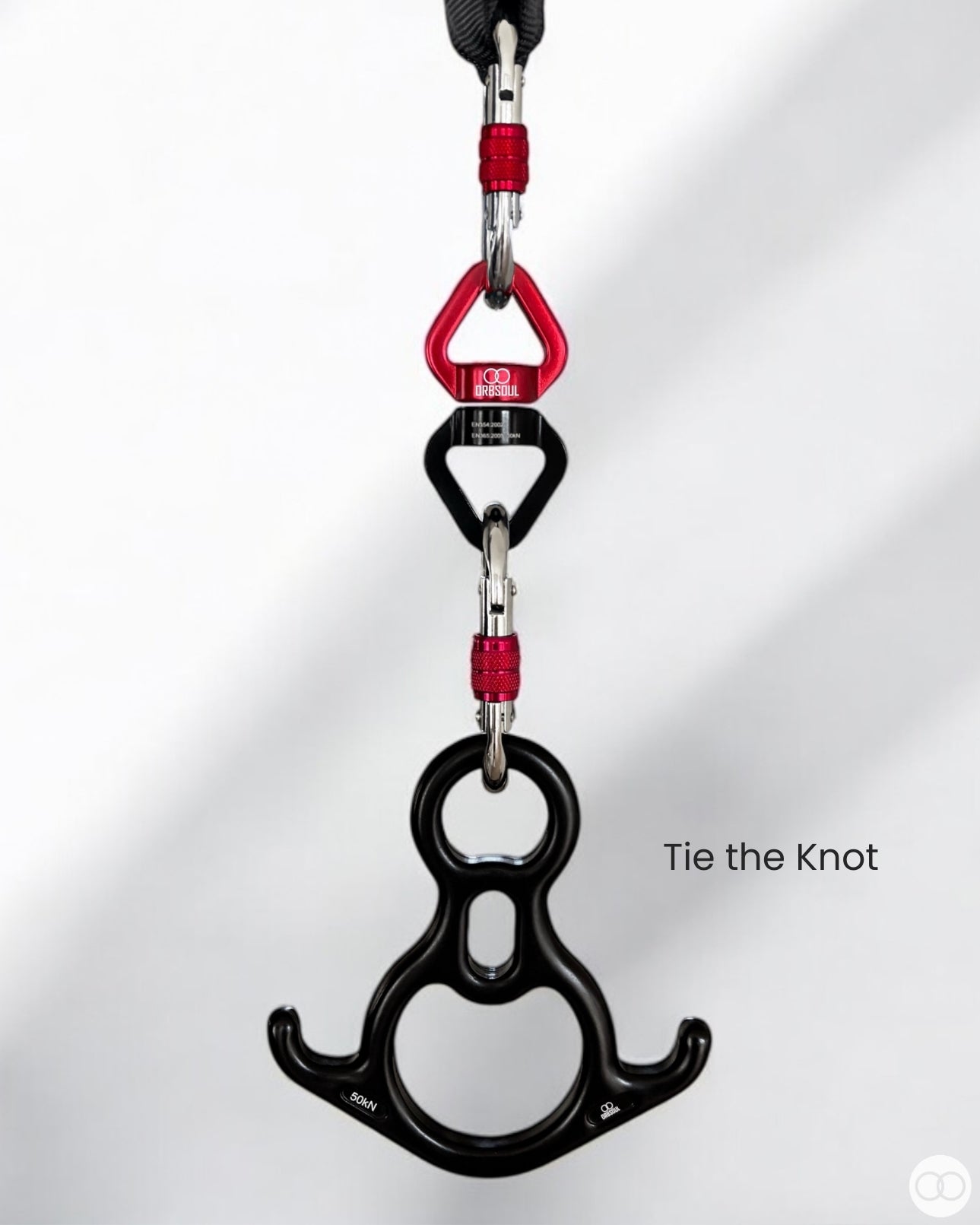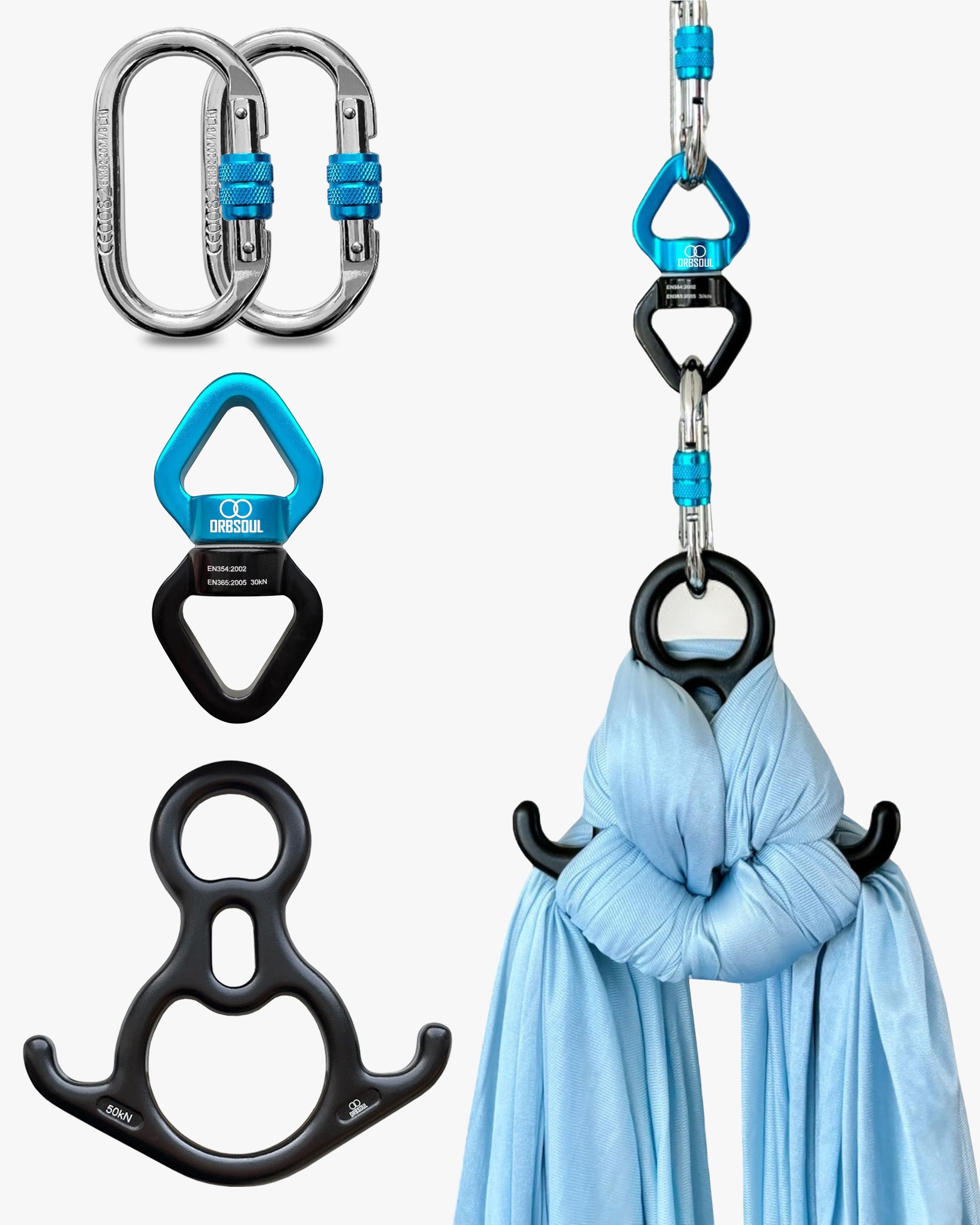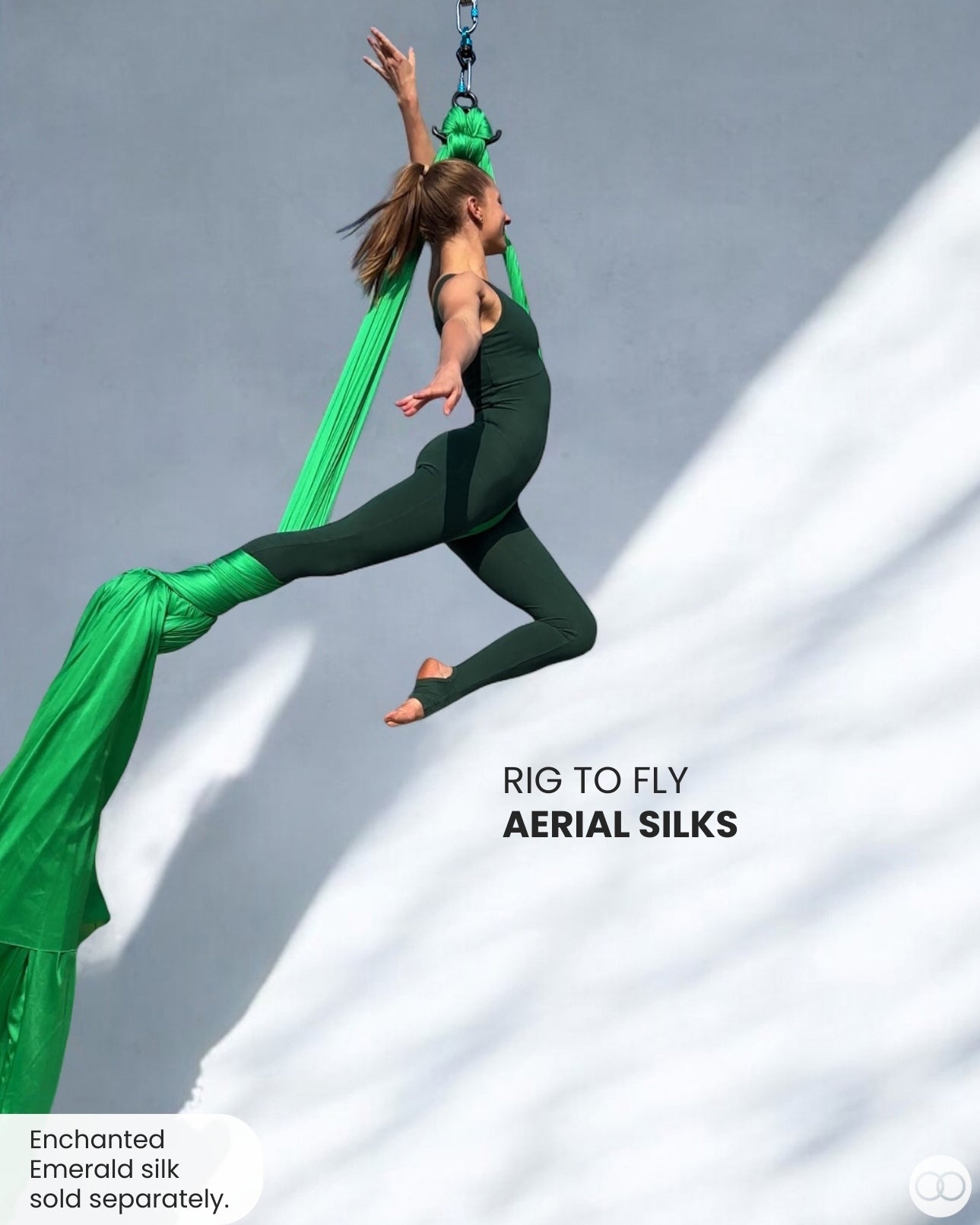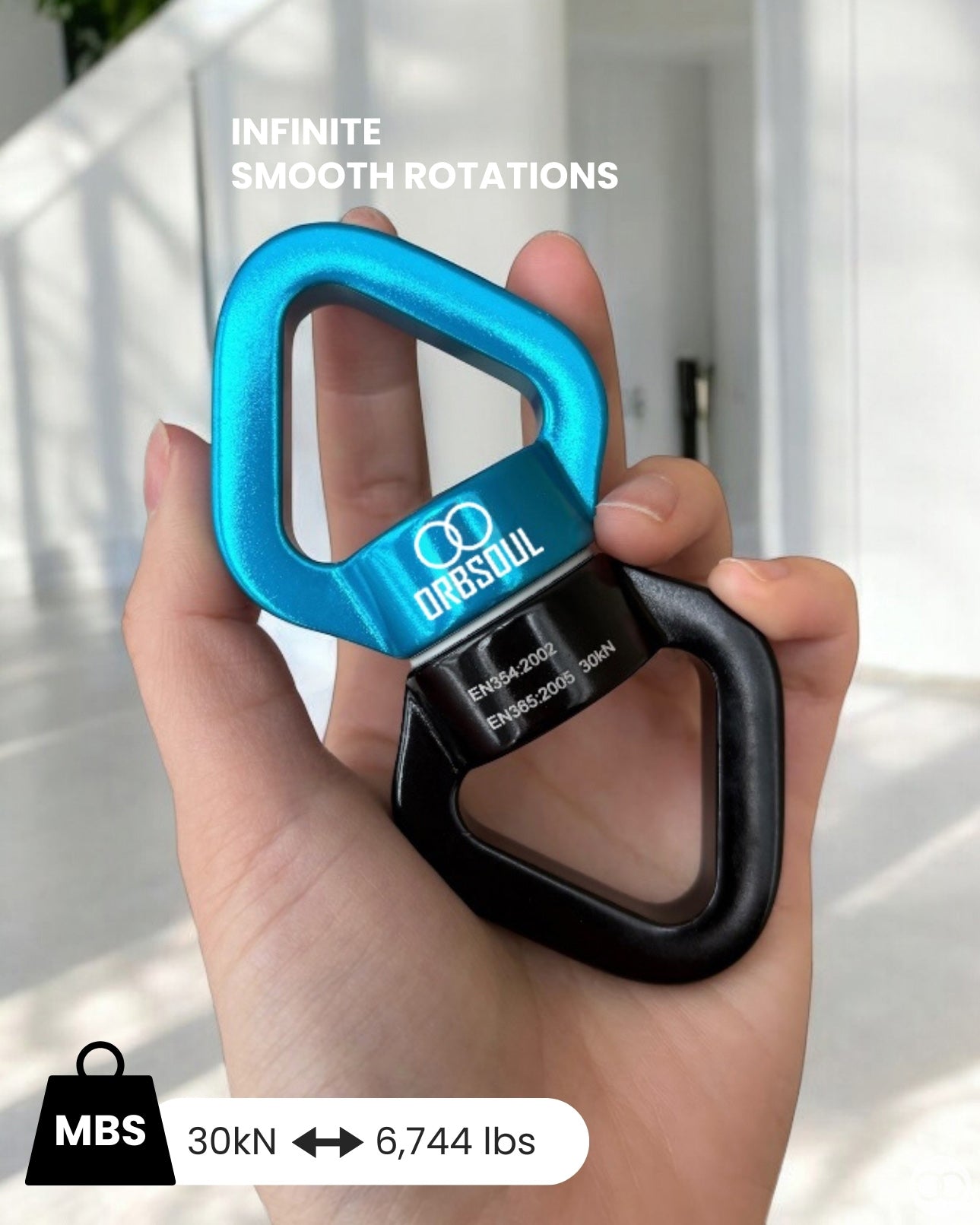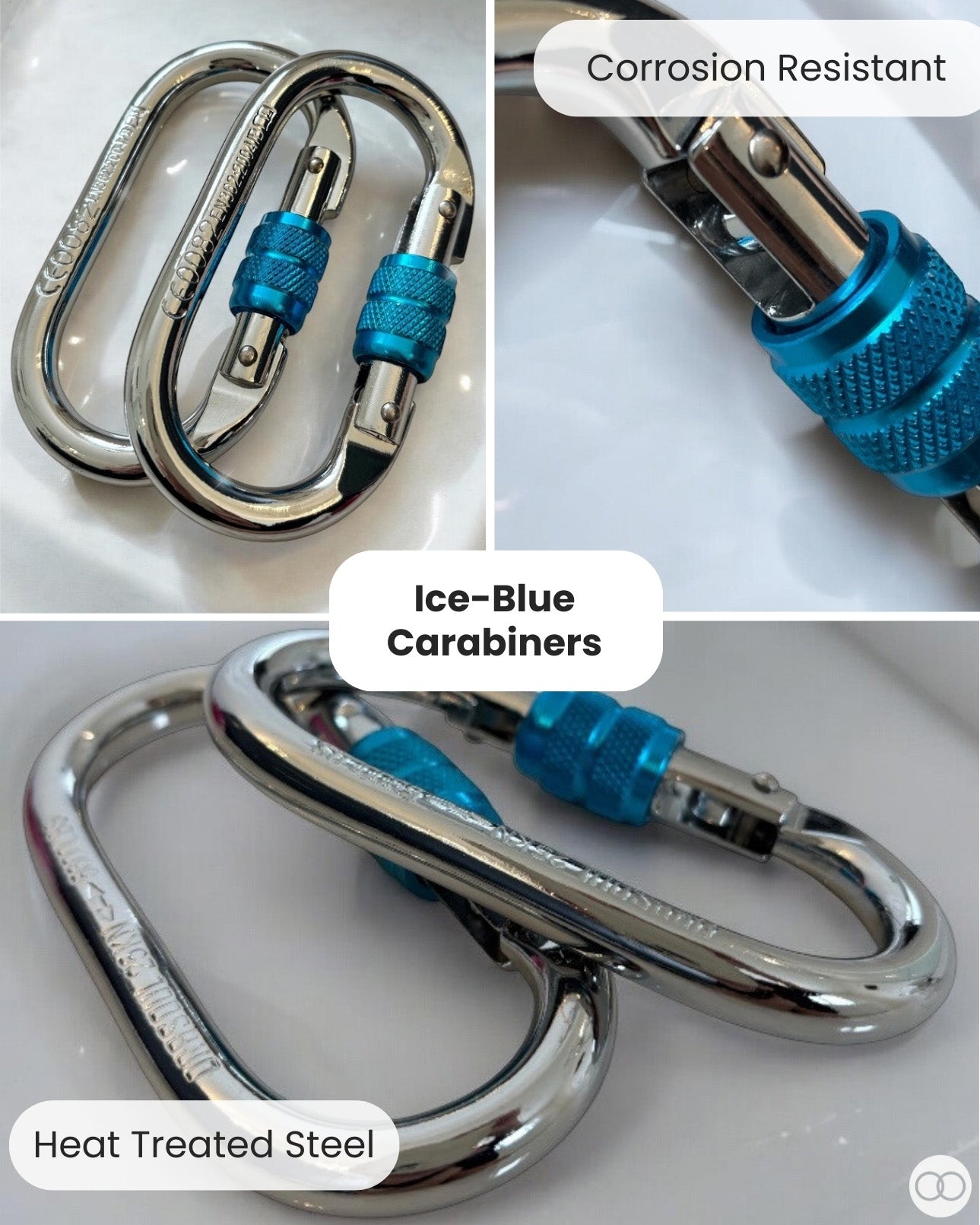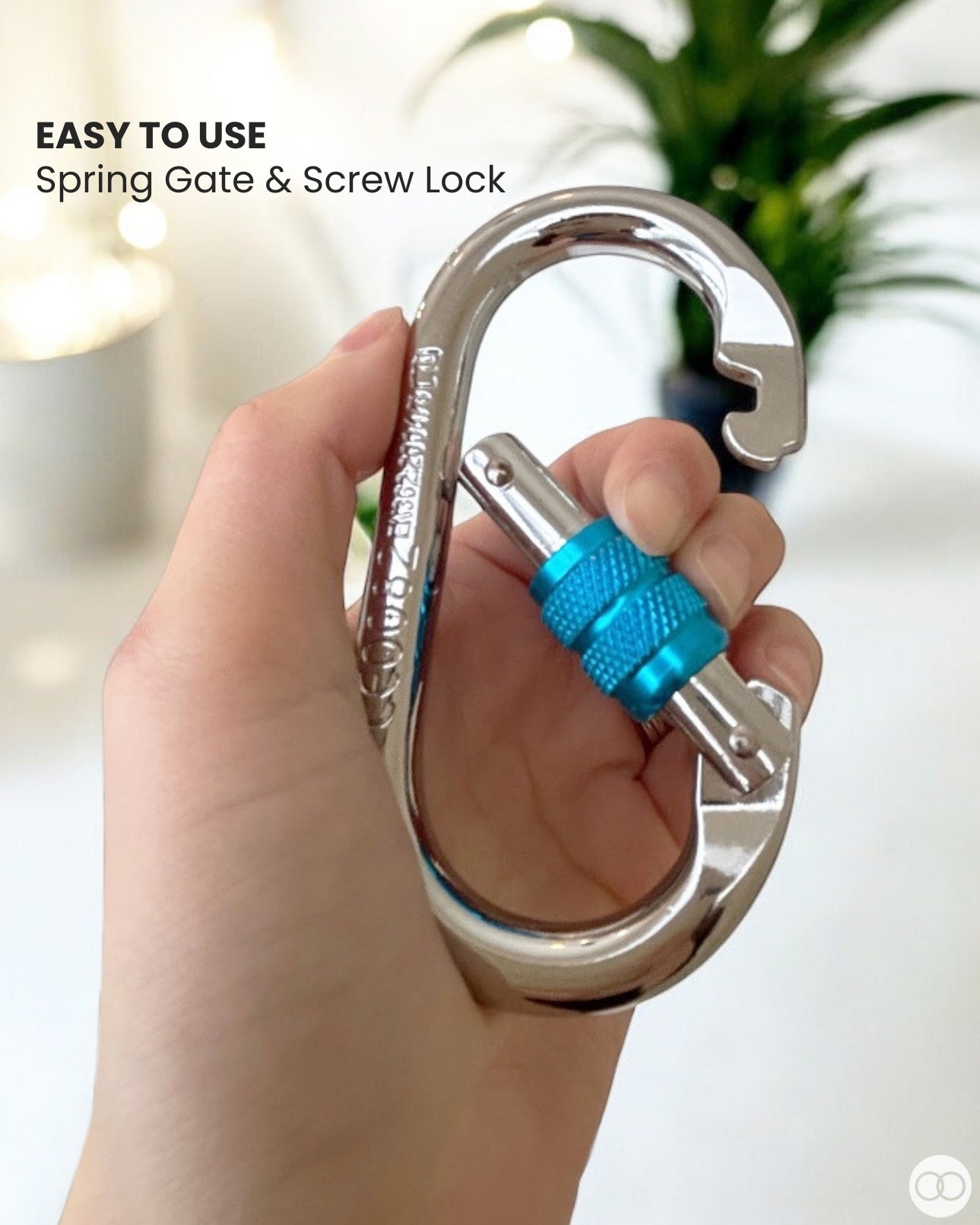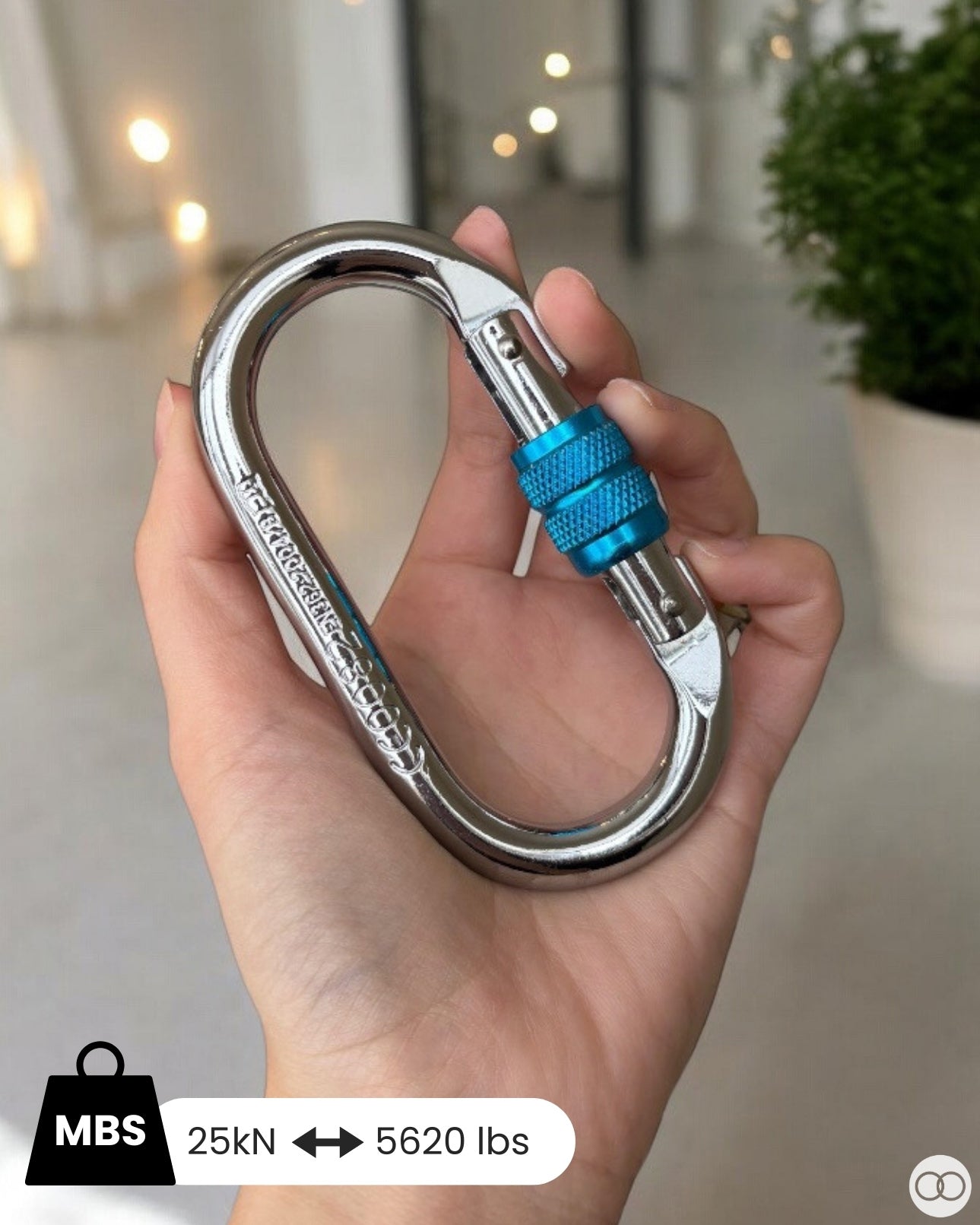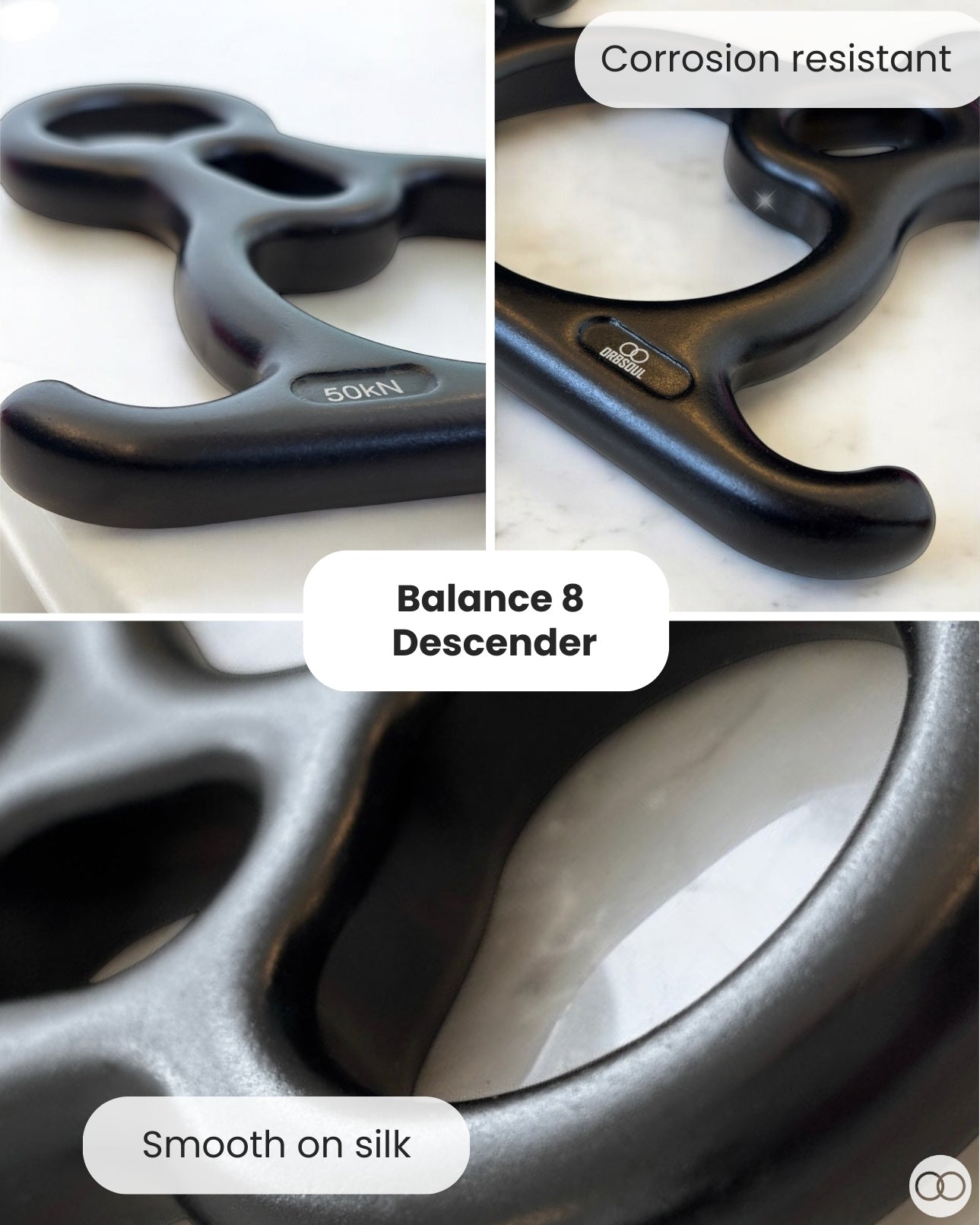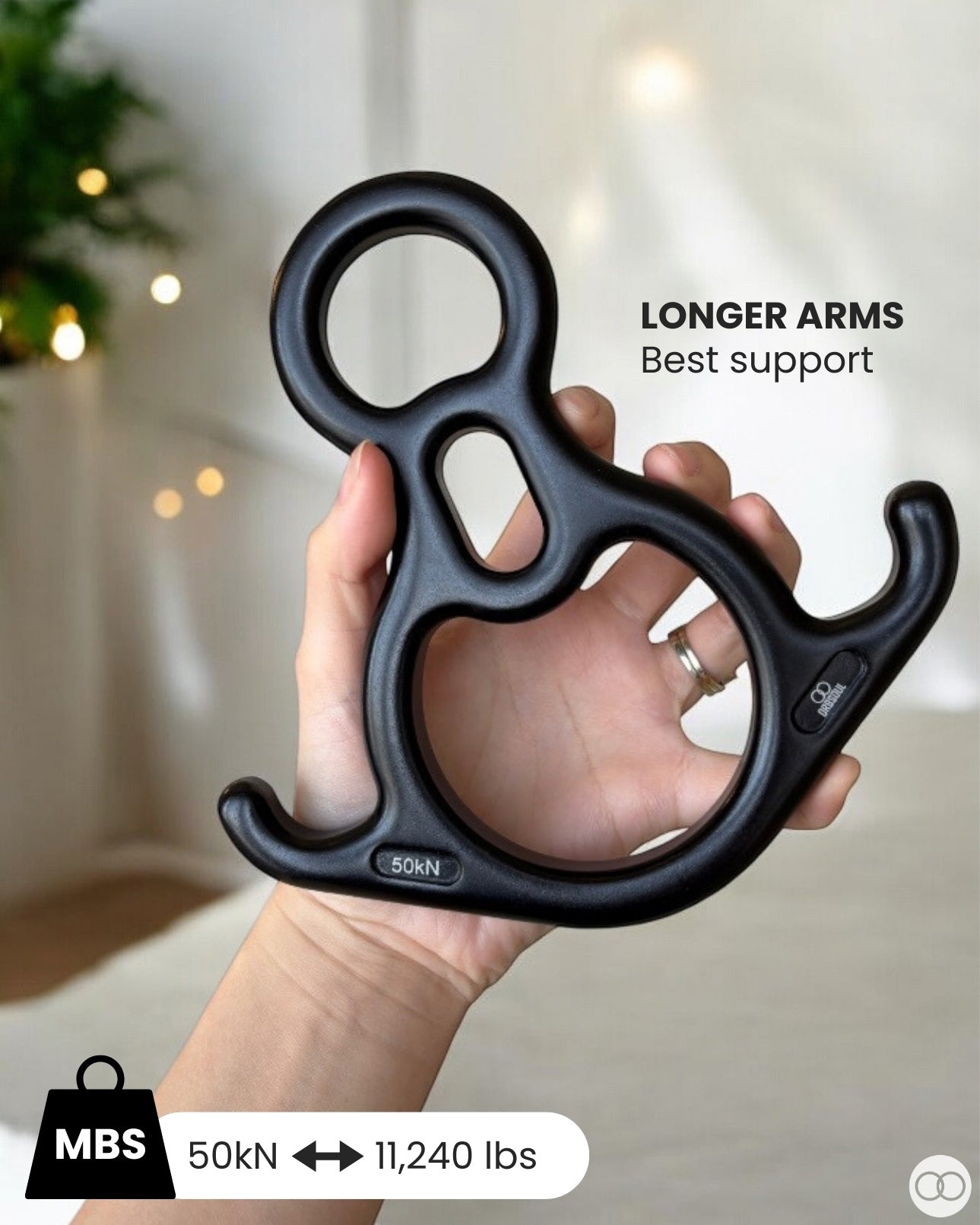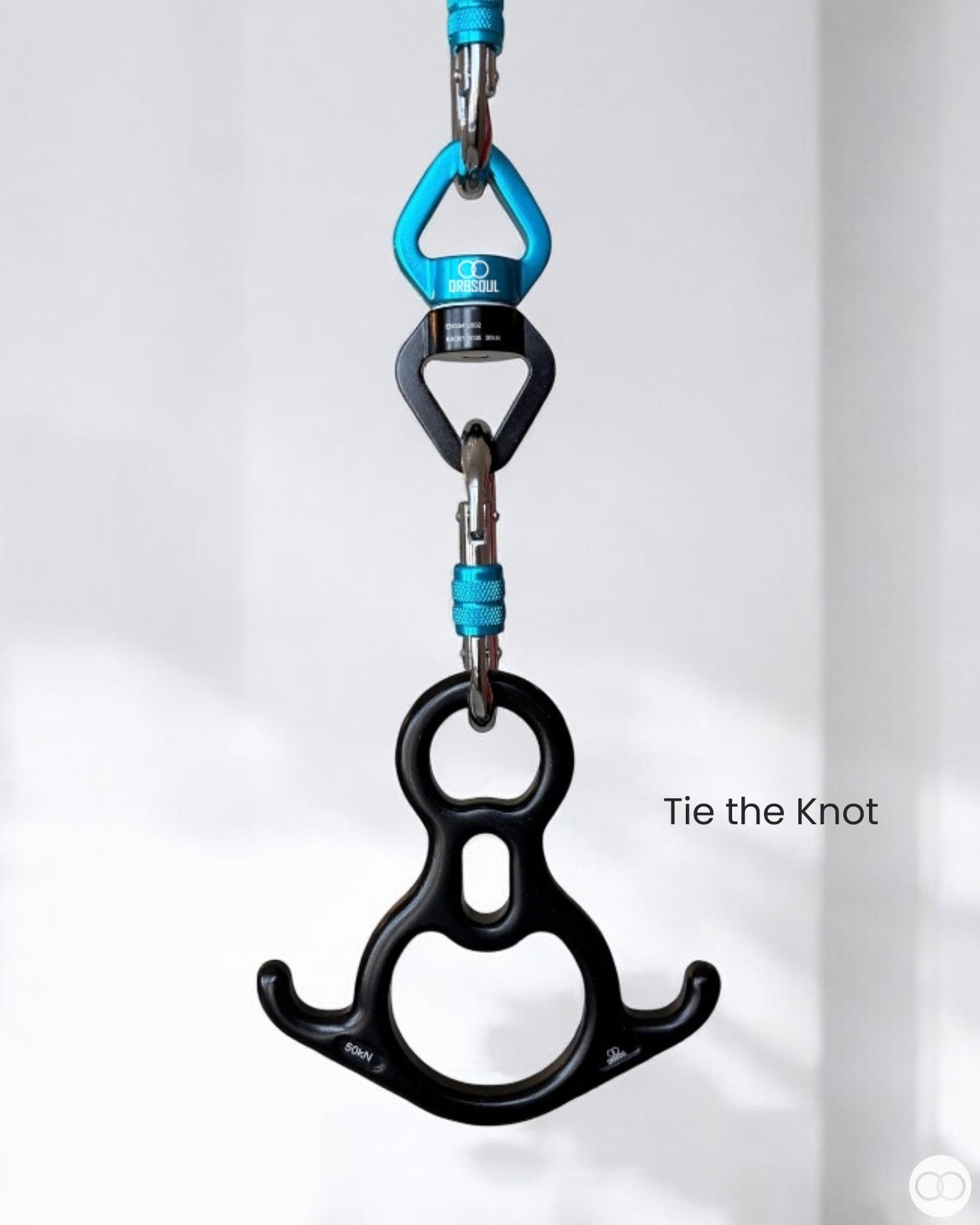Your Safety in Aerial Arts at Home and Studio: 8 Key Points to Keep You Safe
Whether you are practicing at home or in your studio, your safety and well-being is always the top priority.
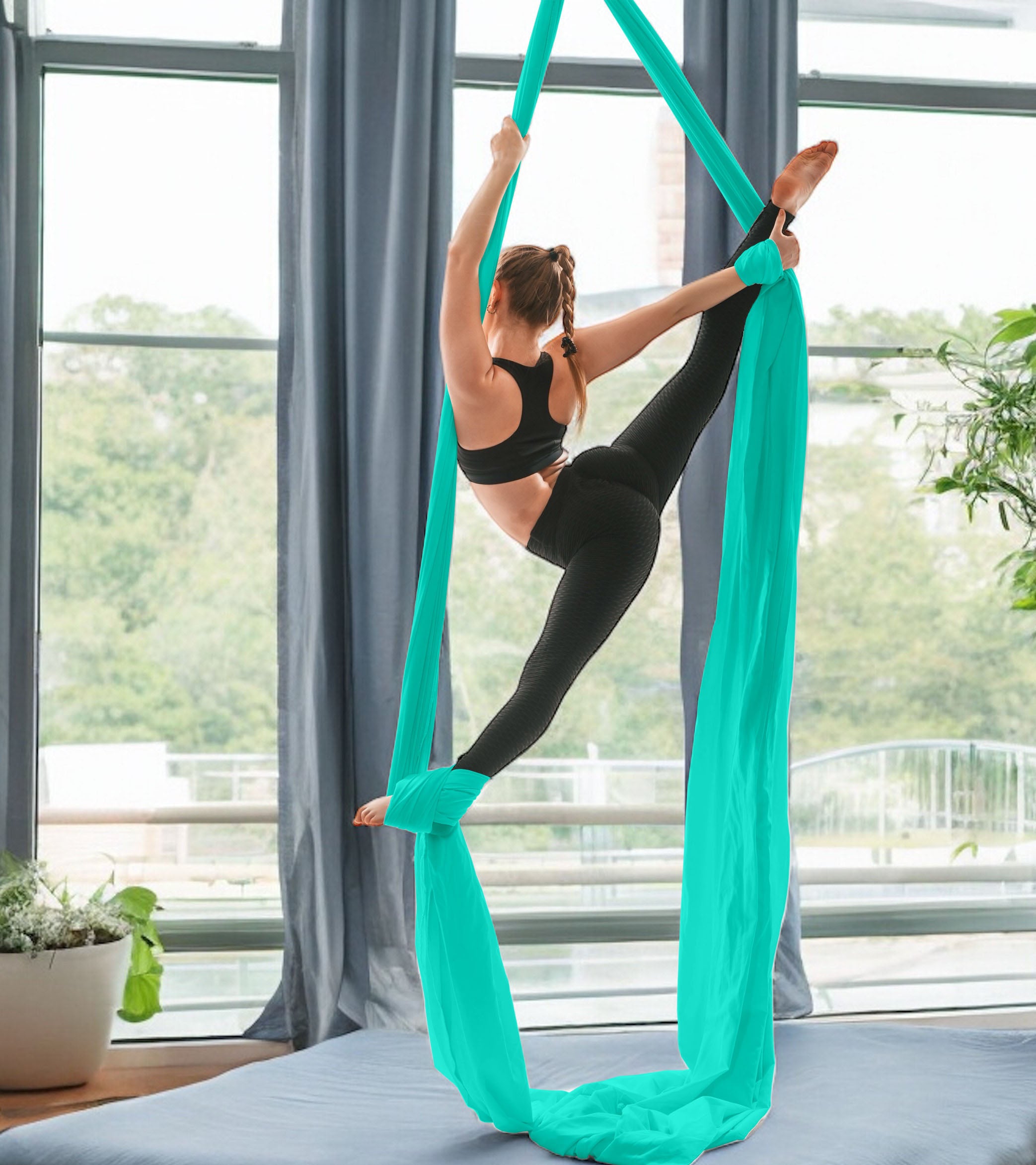
Your journey in aerial silks, aerial yoga, and aerial hoop is incredibly exciting and special. To practice safely and build the strongest foundation, here are 8 essential tips to protect you throughout your aerial adventures.
1. Choose Safety Tested Aerial Gear That Meets Industry Standards
Aerial arts are inherently dangerous and can result in death or injury. Aerial gear is classified as Personal Protective Equipment (PPE) and having the right gear is imperative for your safety in the air.
Although there are many options for aerial gear, properly tested and safety standard equipment can be hard to find. Because of this, not all gear out there is suitable for aerial arts.
To ensure your gear is safe for aerial use, choose equipment that has ongoing batch break testing to comply with the appropriate EN standards for health and safety.
2. Read the Technical Documents And Instructions For Use For Your Gear
By reading the Instructions for Use, you’ll fully understand how to operate your equipment safely and stay within its working limits.
All safety-tested aerial gear comes with a technical notice and instructions for use, as is required by EN standards. If the required documents are not readily available, it's a red flag that usually indicates the gear has not been tested by regulatory bodies and is unsafe for use in aerial arts.
For the most up-to-date technical notice for your Orbsoul aerial gear, click here.
* Regularly visit your gear provider for the most up to date info on your equipment.
3. Ensure your Rigging Point is Secure
Before installing a rigging point (eg. ceiling anchor), your space needs to be inspected by a local professional with aerial arts expertise.

A professional will be able to tell if your structure is suitable for aerial rigging and what types of loads your structure can safely handle. Some structures may not be able to handle the loads in aerial dynamics.
If your structure is suitable for aerial rigging, use anchors that have been strength tested and can safely withstand the forces produced in aerial arts. Ensure it is installed by a professional as they can do a through-beam installation if your intended use is for dynamic aerial movement.
Free Standing Rigs: The drill-free, easy set-up aerial solution
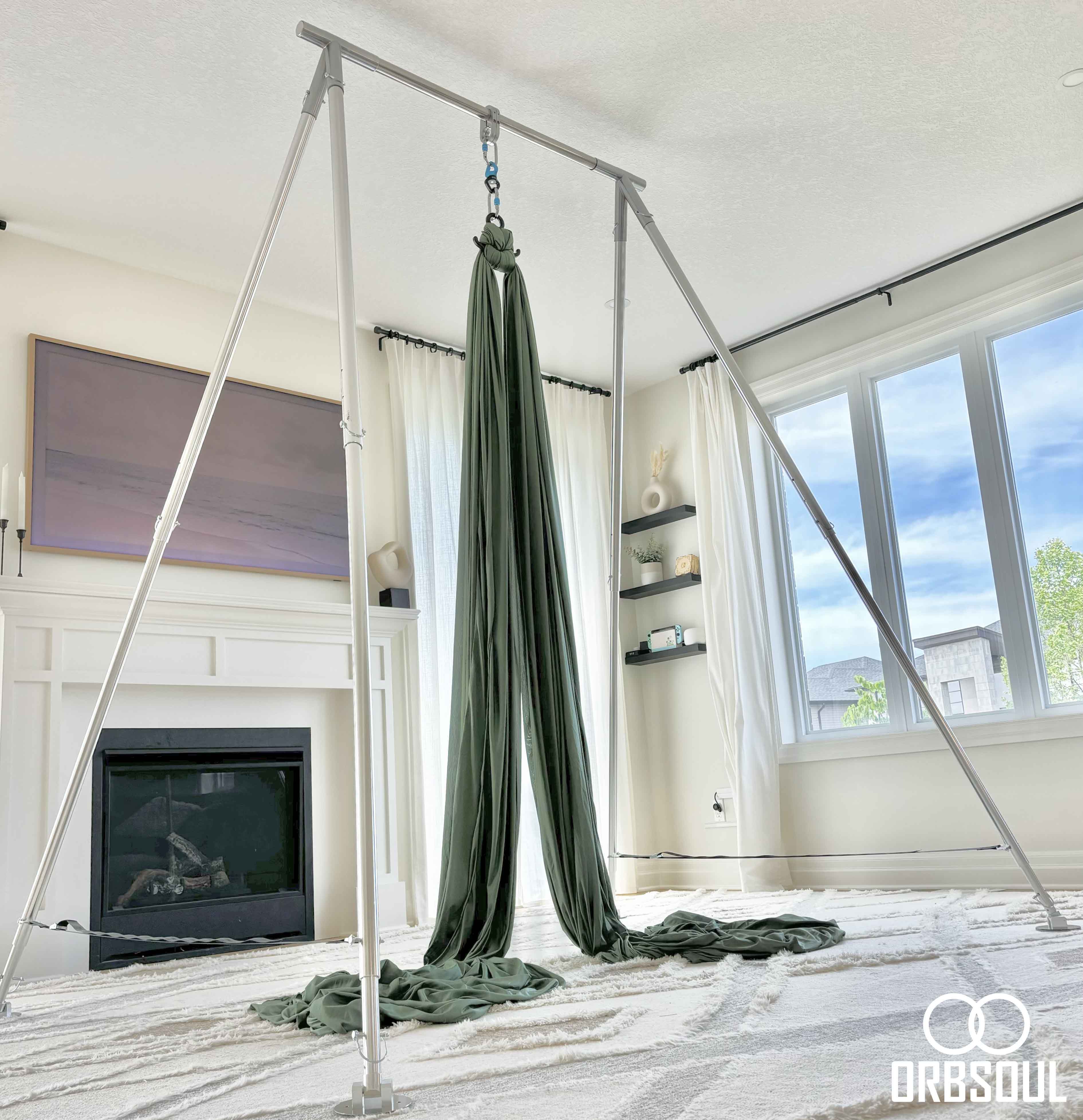
Adjustable rigs such as the Orbsoul Pegasus are often preferred for an aerial rigging point since they do not require ceiling inspection or structural installation.
the Orbsoul Pegasus is custom height adjustable to best fit your space, indoors and out. It comes with storage bags to conveniently store away when not in use and is travel friendly to take with you anywhere you want to fly.
Please note:
- Stay within the safe operational limits of your rig listed in the Instructions for Use
- Injury can occur due to tipping and instability when setting up your rig outdoors. Always use the Stakes provided to properly anchor your rig on grass and other soft ground. Proper staking eliminates tipping injury risks and vastly improves stability during your outdoor aerial practice.
4. Inspect Your Equipment Before Every Flight
*Find the full inspection procedures for your Orbsoul gear in the Instructions for Use.
As with all PPE, it is required that you know the full history of your gear and retire immediately if you have any doubts on its performance or safety. Do not use any equipment that you suspect could be damaged in any way. Reach out to your manufacturer if you have any doubts on its function and do not attempt to modify your equipment yourself. If your gear is known to have been overloaded or has been dropped from height, it is no longer safe to use and warrants replacement.
5. Use A Proper Crash Mat
Always practice over a crash mat that is made for aerial arts.
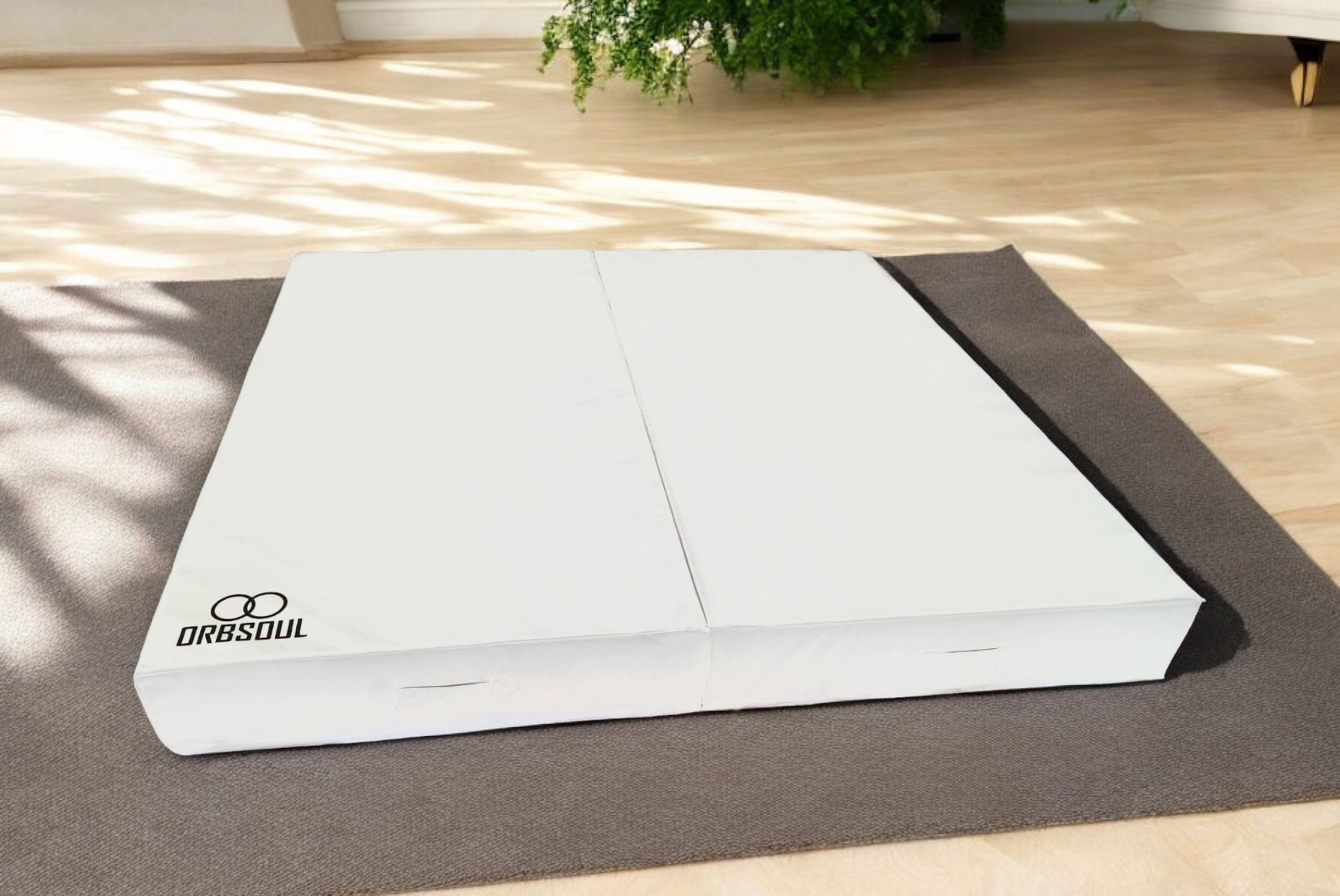
Using a crash mat is essential for aerial arts for several important reasons. Primarily, it provides cushioning that reduces the risk of injury from falls. It can also help boost confidence, allowing you to practice and attempt new moves safely. For beginners, a crash mat is essential as it enables them to build their skills and strength safely. The general guideline for the minimum thickness of a crash mat for aerial arts is 8 inches. Overall, incorporating a proper crash mat ensures a safer and more supportive training environment for aerial artists at all levels.
6. Always Practice with a Partner
Have someone close by in case you get stuck in a move and need help getting down from your aerial apparatus. Your partner should be knowledgeable and know how to help you down safely.
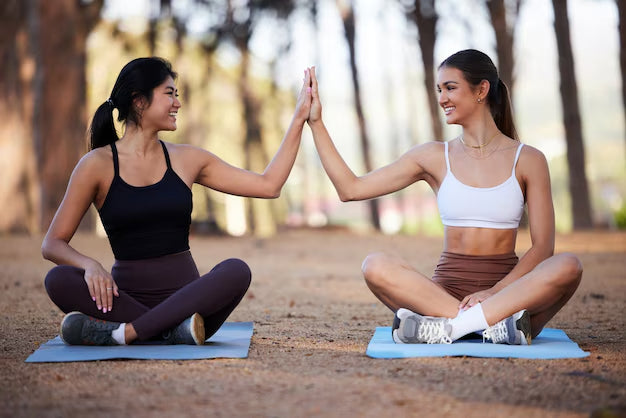
Please note: aerial silks have an added risk of asphyxiation due to tangles so it is crucial that you have someone by your side.
7. Wear Smooth, Comfortable Clothing And Remove Jewelry Before Flying
Choose clothing that is comfortable and forms well to your body so you can move freely to fully immerse yourself in your aerial arts.

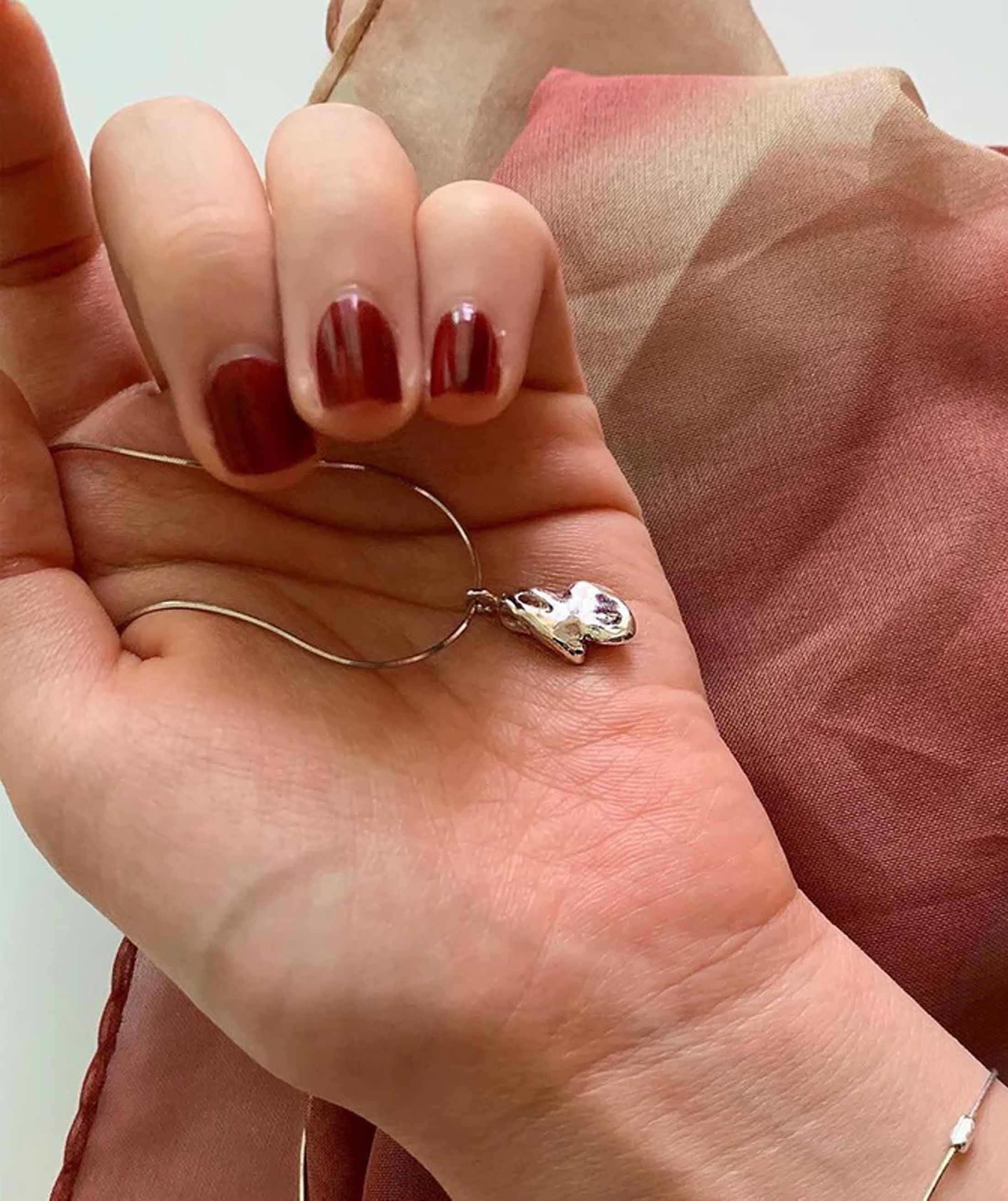
Jewelry can get caught in equipment and is not safe to wear during aerial practice.
8. Learn aerials at home and in studio with experienced aerial coaches
Training in studio with your favorite instructor is always ideal. However if location and scheduling is not available to you, the right way to learn aerial at home is by having the proper gear and access to the right online learning experiences developed by industry-leading aerial coaches.
Expert aerial instructors who are well-versed in the art of virtual learning will provide you with the guidance that you need to achieve your aerial goals confidently and safely from right where you are, on your own personal schedule.
The Leaders in Online Aerial Learning:
Aerial Arts Curriculum by Anastasiia Parkhomenko
Online offerings: Live 1 on 1 teacher mentoring of the full aerial program for beginner to advanced aerialists
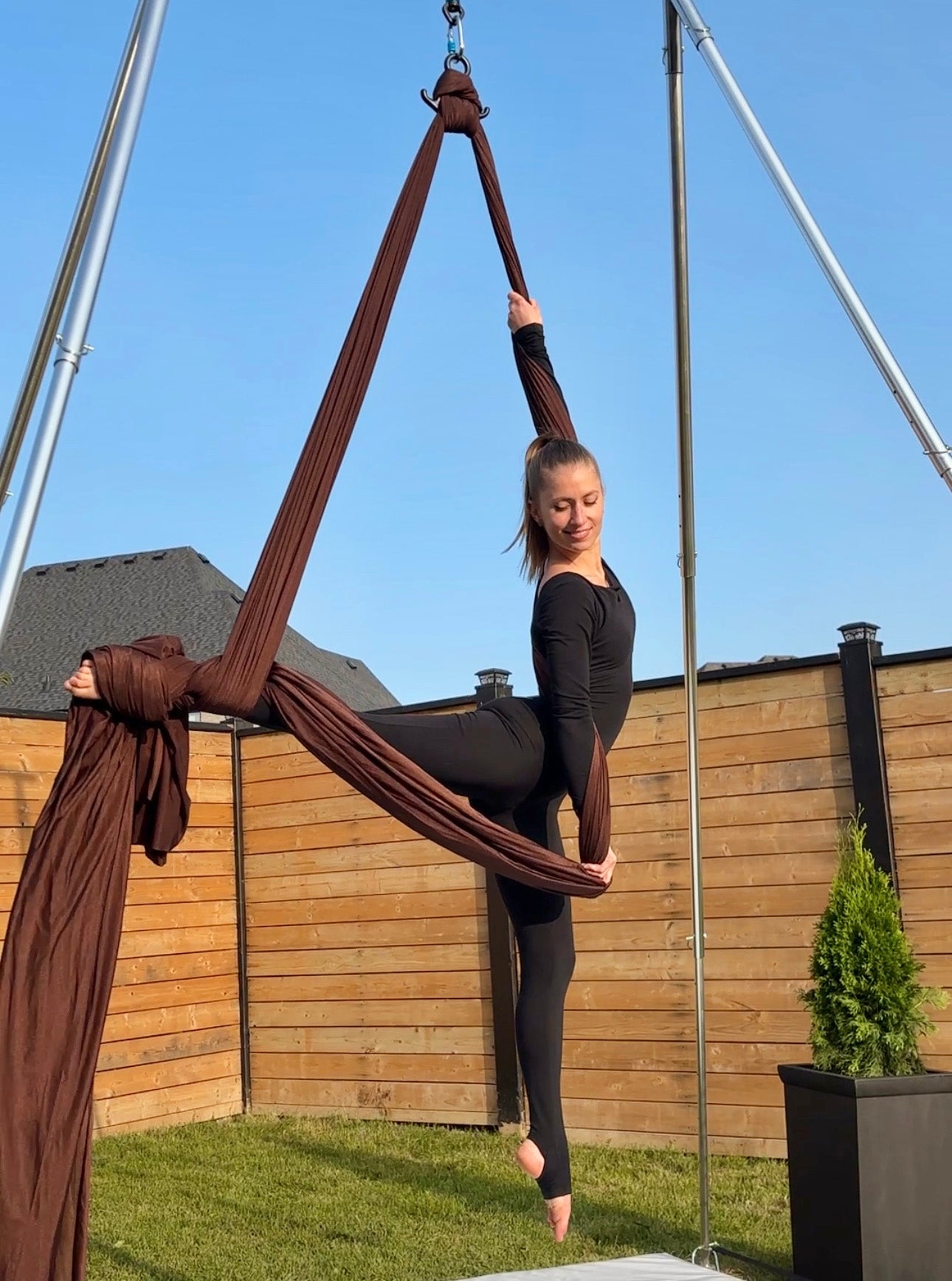
Anastasiia is an aerial arts instructor with a high degree of education. She holds a Master of Circus Arts from her wonderful home in Kyiv, Ukraine. Journeying around the world as an renowned aerial coach and moving to Canada 3 years ago, she continues guiding aerialists from fresh beginners to embracing competition on the world stage. Whether she is coaching in world-class aerial academies, or teaching aerial arts through online learning, her proven methods rooted in performative arts and high-level technique will ensure that you have what you need to achieve your aerial goals and beyond.
Anastasiia loves to perform in her city of Ottawa and was invited by Cirque du Soleil.
Online offerings: Aerial silks, hoop, sling, aerial theory, choreography
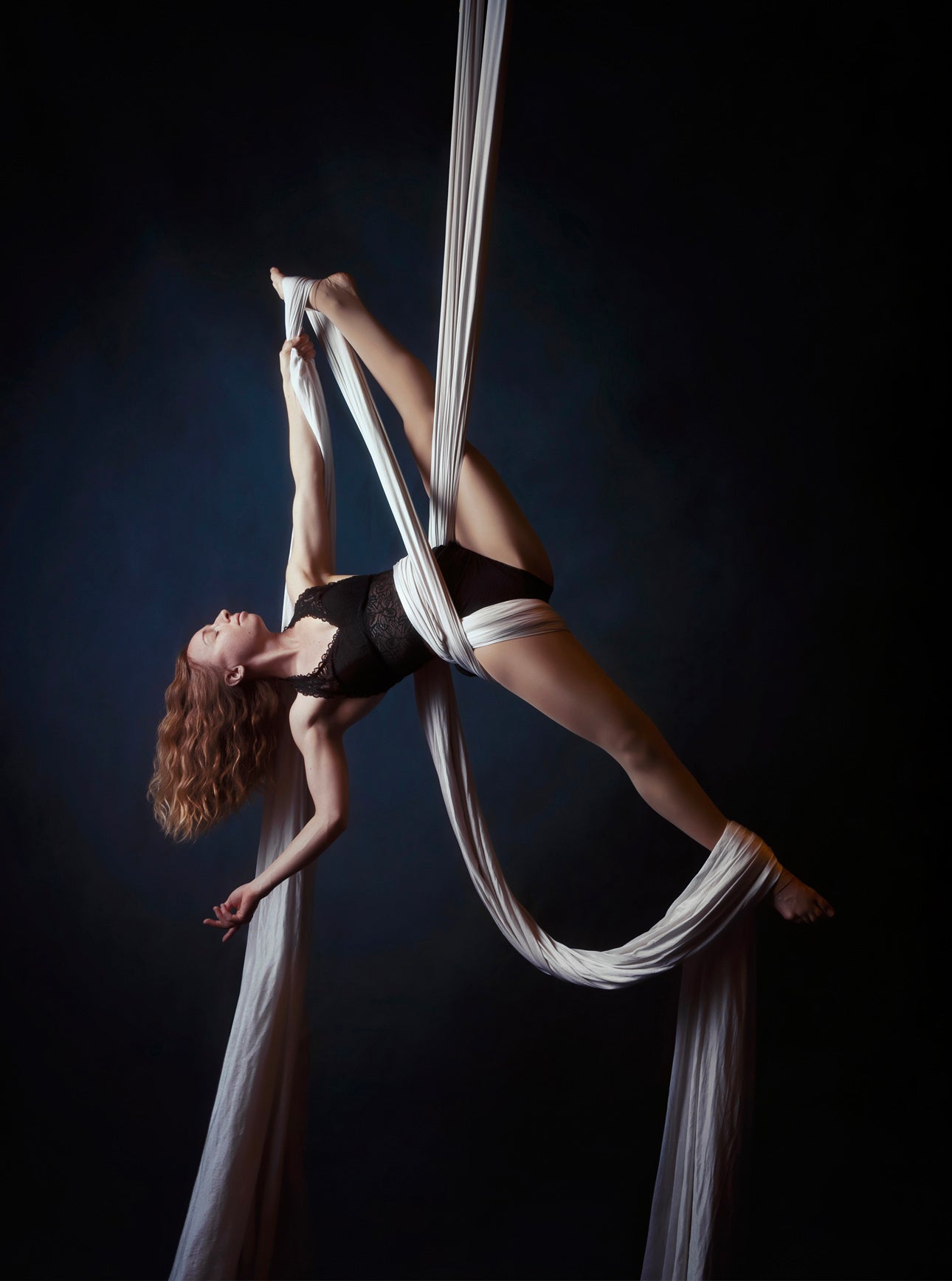
Dive deep into your personalized aerial journey through a uniquely transformative learning experience. Expert instructor and creator of Wakeful Ascent Aerial Arts, Sara Kaiser, understands the need to pave your own path. Her own aerial journey is unique and remarkable, learning aerial silks in a town where there was no aerial studio to become the trailblazer who opened the very first one.
Through natural exploration, play, dedication, and self discovery, a beautifully detailed and unique understanding of aerial arts is uncovered. Wakeful Ascent is here to guide you in experiencing your Own aerial journey from right where you are, all in eye-opening detail and knowledge.
We love that Wakeful Ascent nurtures our community through inclusivity and celebration of diversity in experiences, art, and ideas.
Online Offerings: beginner classes, aerial yoga, aerial Pilates, conditioning and wellness

NDIYO Aerials provides a streamlined learning experience to get you off the ground. Today. Perfectly structured and meticulously crafted, this library of aerial hammock teachings will have you feeling at ease as you explore and conquer your aerial fitness goals through expert coaching. Creator and teacher Nikki Beck combines medical science with aerial arts to safely guide you to your full wellness potential in aerial hammock. Experience your fitness in a new and exciting way in your aerial hammock and feel better with every movement. Start your journey now and learn aerials on your own schedule, from right where you are.
Other things to consider in safety in aerial arts
- Warming up first is your best way to get the most out of your time in the air and stay injury-free.
- Move at your own pace. Always acknowledge your accomplishments and progression.
- Feed your body well, keep hydrated, rest often, and tune in to your needs.
- Visit your studio often to learn and connect in-person.
- Share your ideas, experiences, and milestones.

